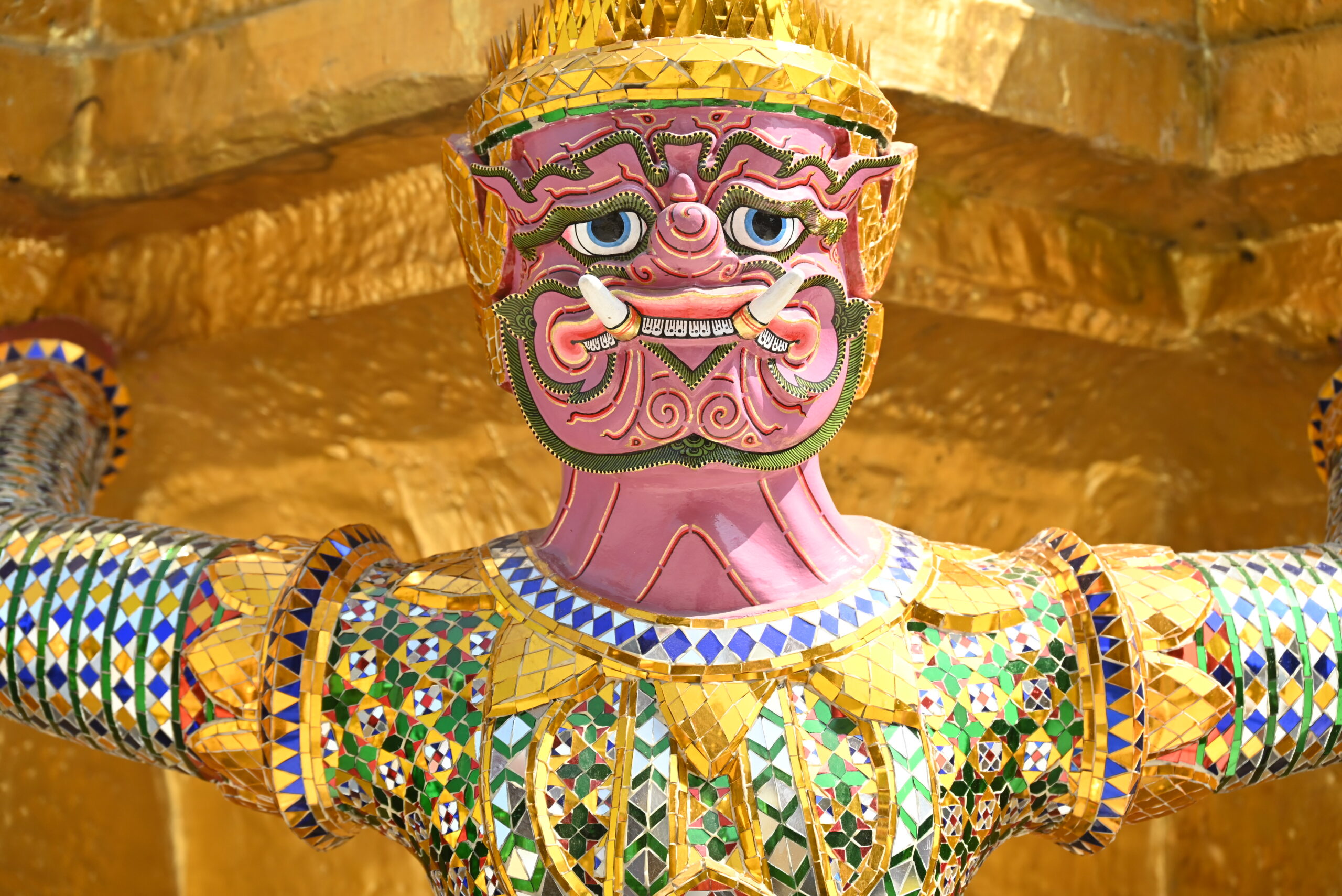The Hairy giraffe… IN INDONESIA
For our month in Indonesia, we start with the island of Java, where we spend the first week of our stay. We see beautiful Buddhist temples and magnificent volcanoes. Next, we head to the influencer’s paradise: Bali. We end up staying longer than planned because dengue fever forces us to cancel our trip to Sulawesi, where we hoped to experience a bit more authenticity. Fortunately, the symptoms only appear after we have had the chance to discover the charms of Bali, including its Hindu temples, traditional dance performances, massages, and rice terraces. However, we also encounter traffic jams, incessant solicitations, and beaches covered with trash…
How long? We spent 27 days in Indonesia. We initially planned to spend one week on the island of Java, two weeks in Bali, and one week in Sulawesi. However, dengue fever forced us to cancel our stay in Sulawesi and extend our time in Bali.
When? Mid-May to mid-June. After the rainy season and before the high tourist season.
Ease of independent travel: 2 giraffes ![]() Getting around independently in Indonesia is not easy. Public transportation (buses) exists, but schedules are often very flexible, and signs are either absent or only in Indonesian. Bus rides can sometimes take longer than walking… Grab is available, but at ridiculously high prices. Taxis are also an option, but you’ll be charged the special foreigner price (which is very high), and you’ll still have to negotiate..
Getting around independently in Indonesia is not easy. Public transportation (buses) exists, but schedules are often very flexible, and signs are either absent or only in Indonesian. Bus rides can sometimes take longer than walking… Grab is available, but at ridiculously high prices. Taxis are also an option, but you’ll be charged the special foreigner price (which is very high), and you’ll still have to negotiate..
On Java, trains are available for long distances. They are often delayed and not easy to book (due to the language barrier). They are also quite slow (expect 4 hours to cover 300 km). Additionally, most of them run at night, making it difficult to get a daytime journey.
On Bali, there is no train service available. Instead, you can rely on hiring a driver. You typically rent their services for ten hours and can plan your itinerary as you wish. However, the rates are quite high.
Certain cities in Bali also prohibit Grab pickups on their streets. A taxi mafia offers the services of pseudo-drivers throughout the streets of Ubud and Kuta, maintaining high prices.
If you’re more adventurous and don’t mind basic comfort, you can also take overnight buses to connect to major destinations.
The majority of tourists get around on two wheels. However, since it’s not our preference at all, we strongly advise against it. Two-wheelers are abundant on the roads, and Indonesian driving is very chaotic. They drive fast and can easily turn a single lane road into a four-lane road (2 lanes in each direction). Moreover, the roads are sometimes in poor condition. Ending up in an Indonesian emergency room is probably not the best idea. There are several hundred road accidents involving tourists on two-wheelers each year in Bali…
Whatever road transport you choose, keep in mind that traffic jams are common in Java and Bali. Traveling 30 km can easily take 1.5 hours, so plan accordingly.
Costs: 4 giraffes ![]() You are mistaken if you believe that Indonesia is a cheap country. On Java, for instance, while it’s possible to find a very decent hotel room with air conditioning for less than 15 euros per night and to eat for less than 3 euros, getting around with Grab (the Asian Uber) will cost you much more. Expect to spend around 20 euros for a forty-kilometer journey (to go from the city center to the airport or from the city center to Borobudur).
You are mistaken if you believe that Indonesia is a cheap country. On Java, for instance, while it’s possible to find a very decent hotel room with air conditioning for less than 15 euros per night and to eat for less than 3 euros, getting around with Grab (the Asian Uber) will cost you much more. Expect to spend around 20 euros for a forty-kilometer journey (to go from the city center to the airport or from the city center to Borobudur).
The entrance fees to major sites are also very expensive. For example, the price for Borobudur Temple is exorbitant and much higher than the entrance fees to the most famous European sites.
Bali is no exception. Every waterfall, temple, and visit comes with an entrance fee, and prices have a tendency to increase beyond inflation.
The displayed prices are not the final prices either: you need to add taxes and service charges if you are at a restaurant. This practice, uncommon in Asia, can inflate your bill by about 10% (sometimes even more).
In short, overall, a lot of time is spent paying, and the final bill can end up higher than expected…
Ease of communication: 2 giraffes ![]() English is not spoken by the majority of Indonesians. It can be difficult to make yourself understood in English, even at highly touristy sites.
English is not spoken by the majority of Indonesians. It can be difficult to make yourself understood in English, even at highly touristy sites.
Safety: 4 giraffes ![]() Overall, traveling in Indonesia isn’t overly risky. However, it’s important to note that the country is in a seismic zone and is prone to tsunamis.
Overall, traveling in Indonesia isn’t overly risky. However, it’s important to note that the country is in a seismic zone and is prone to tsunamis.
As in many Asian countries, pedestrians also risk their lives when walking in the streets of Indonesia. Streets generally lack sidewalks, and pedestrians do not have the right of way.
Health: 1 giraffe ![]() The Indonesian healthcare system is not among the most advanced in Asia. The water is not drinkable, and food hygiene standards are not always adhered to. Tourists must be vigilant to avoid spending several days bedridden or sitting on the toilet. Food poisoning is so common that there’s an English term used for traveler’s diarrhea: “Bali Belly.” It’s certainly not the place to be adventurous by eating dishes made from chicken drying in the sun since morning at any random warung (local restaurant).…
The Indonesian healthcare system is not among the most advanced in Asia. The water is not drinkable, and food hygiene standards are not always adhered to. Tourists must be vigilant to avoid spending several days bedridden or sitting on the toilet. Food poisoning is so common that there’s an English term used for traveler’s diarrhea: “Bali Belly.” It’s certainly not the place to be adventurous by eating dishes made from chicken drying in the sun since morning at any random warung (local restaurant).…
Gay friendly: 2 giraffes ![]() Islam is less conservative in Indonesia compared to Malaysia. The LGBT population has slightly more rights in Indonesia, and homosexuality is somewhat more accepted by the population, especially on the Hindu island of Bali. Nevertheless, we advise you to remain discreet to avoid any potential problems.
Islam is less conservative in Indonesia compared to Malaysia. The LGBT population has slightly more rights in Indonesia, and homosexuality is somewhat more accepted by the population, especially on the Hindu island of Bali. Nevertheless, we advise you to remain discreet to avoid any potential problems.
Travel ease: 3 giraffes ![]() Traveling independently on a low budget can indeed be challenging in Indonesia. However, if you’re willing to spend more, Indonesia remains a relatively accessible country, despite the often slow and uncomfortable journeys.
Traveling independently on a low budget can indeed be challenging in Indonesia. However, if you’re willing to spend more, Indonesia remains a relatively accessible country, despite the often slow and uncomfortable journeys.
Highlights: ![]() The temples of Java, Mount Bromo, the Ubud Monkey Forest, the traditional dance performances (finally something cultural!), and the beautiful nature of Bali.
The temples of Java, Mount Bromo, the Ubud Monkey Forest, the traditional dance performances (finally something cultural!), and the beautiful nature of Bali.
Letdowns: ![]() The influencers who try to bribe guards to access areas forbidden to tourists, the always long journeys despite short distances to cover, the constant chaos everywhere in Bali, all the magnificent temples of Bali that are inaccessible to tourists, Ubud (which is nothing like a cultural capital despite its reputation), Kuta (a monstrosity with an Australian twist overflowing with tourist traps), the constant harassment in the streets of Kuta and Ubud for taxis, massages, shops, tattoos, drugs (!), etc., the permanent taxes and exorbitant tourist prices especially in Java, and those damn female mosquitoes spreading all sorts of diseases, including dengue.
The influencers who try to bribe guards to access areas forbidden to tourists, the always long journeys despite short distances to cover, the constant chaos everywhere in Bali, all the magnificent temples of Bali that are inaccessible to tourists, Ubud (which is nothing like a cultural capital despite its reputation), Kuta (a monstrosity with an Australian twist overflowing with tourist traps), the constant harassment in the streets of Kuta and Ubud for taxis, massages, shops, tattoos, drugs (!), etc., the permanent taxes and exorbitant tourist prices especially in Java, and those damn female mosquitoes spreading all sorts of diseases, including dengue.
Check out our Travel Reflections articles on Indonesia:
ONE-MONTH ITINERARY IN INDONESIA
Here is the detailed itinerary of our week in Indonesia:
Day 0: A flight of just over two hours brings us to Yogyakarta, on the island of Java, from Kuala Lumpur. We land in the late afternoon. We take a Grab to our hotel. It takes 1.5 hours to travel just 35 km… Welcome to Indonesia!

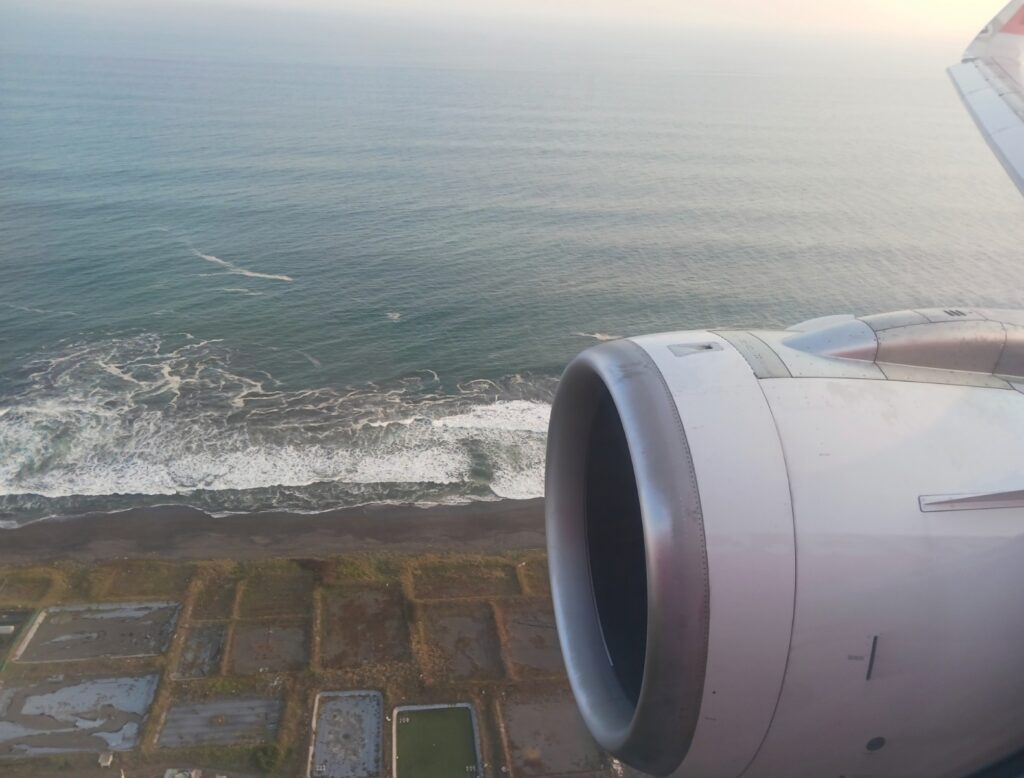
Day 1: We planned to visit the Taman Sari water palace and the Royal Palace, the Sultan’s residence. Unfortunately, both are closed for another two days. Since we’re leaving the city the day after tomorrow, we’ll have to skip them.



We stroll through the nearby streets. Motorbikes everywhere, streets somewhat demolished, and the constant offers for tuk-tuk rides (which we hadn’t seen since the Philippines) make the stroll less enjoyable.
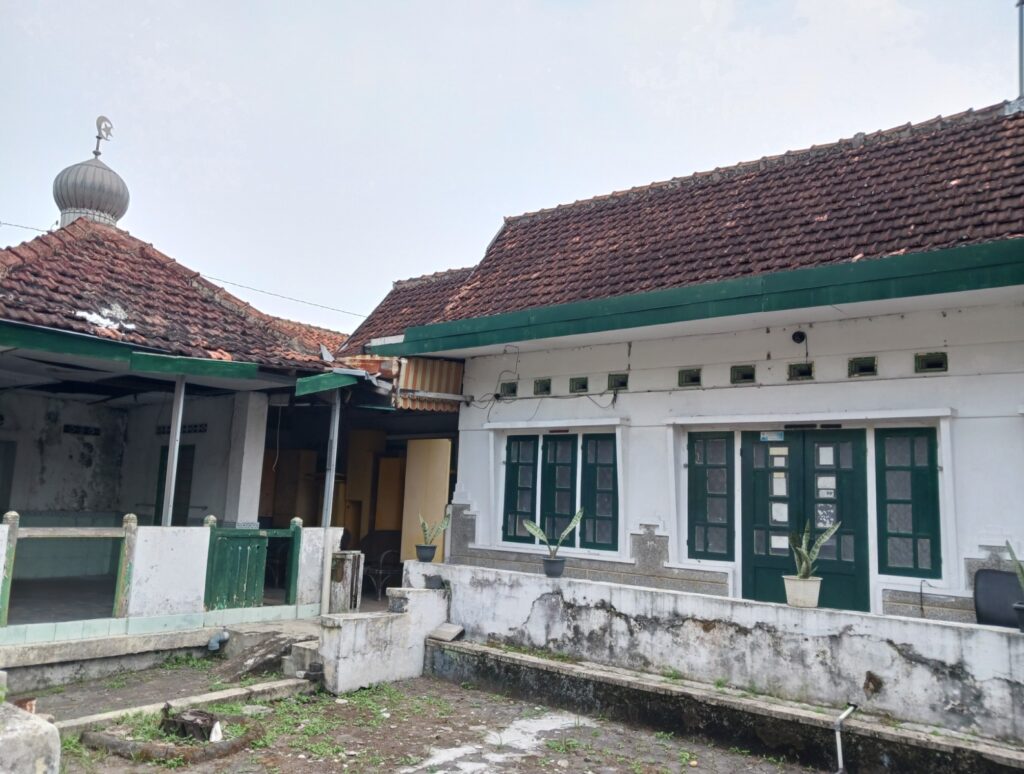


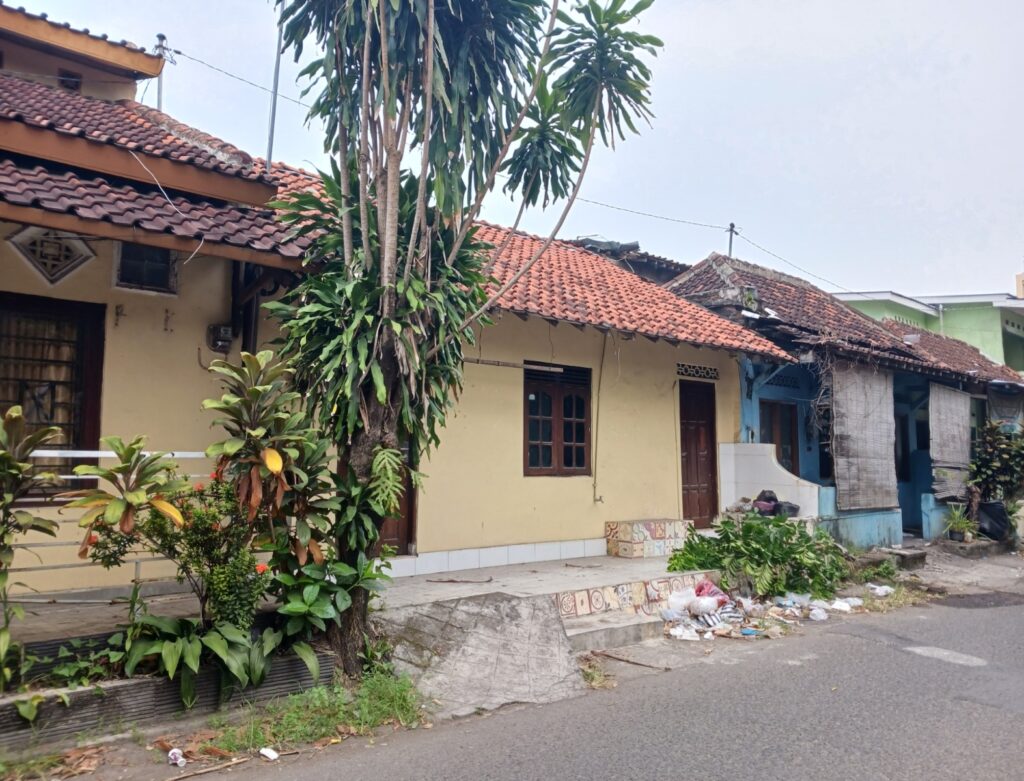
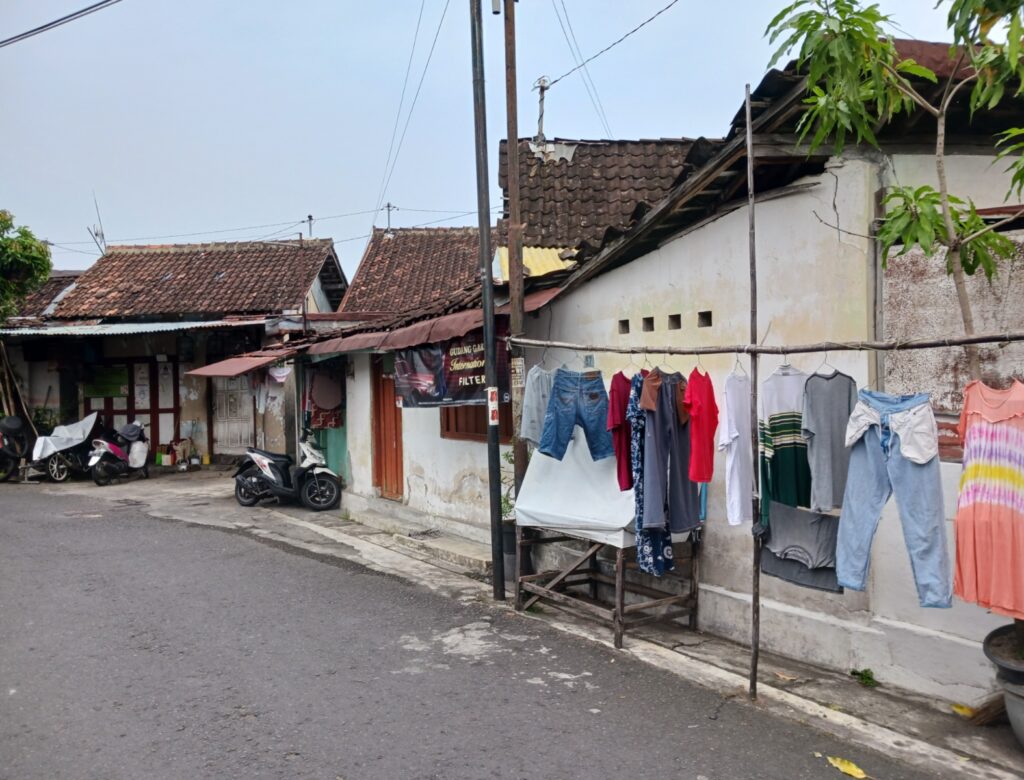
We have lunch with traditional Indonesian dishes before spending the afternoon at the hotel.

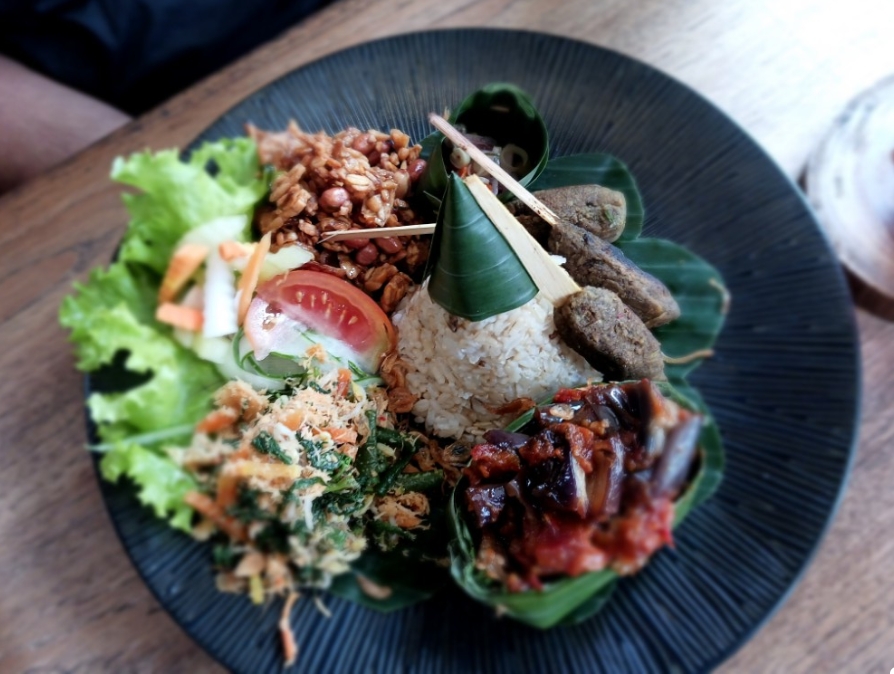
Day 2: We plan to visit the two famous temples in Java: Prambanan and Borobudur. We have two options for this. The first is to go independently using Grab to travel between the temples. The second option is to book an all-inclusive tour through our hotel. After several calculations, we conclude that using Grab would be more expensive. Since the two sites are located far apart, we would need to make round trips, making the adventure more costly than taking a tour.
So we leave around 6:45 AM heading towards Prambanan Temple after a quick stop at a nearby hotel to pick up other tourists. The journey takes us a little over an hour, and we have two hours to explore the site.
Prambanan is a Hindu complex built in the 9th century. It is the largest Hindu complex in the country and the second largest in Southeast Asia after Angkor. The complex originally consisted of 240 temples. Today, only 4 temples remain standing and are open to visitors. The site is well-maintained with clear signage to ensure nothing is missed. We start with the Rorro Jonggrang temple, the main and largest temple on the site. Quickly, the site reminds us of the temples of Angkor with its similar black and pointed structures. The bas-reliefs strongly resemble those found in Cambodia. However, the site is in much better condition here, and the vegetation is not overgrown.


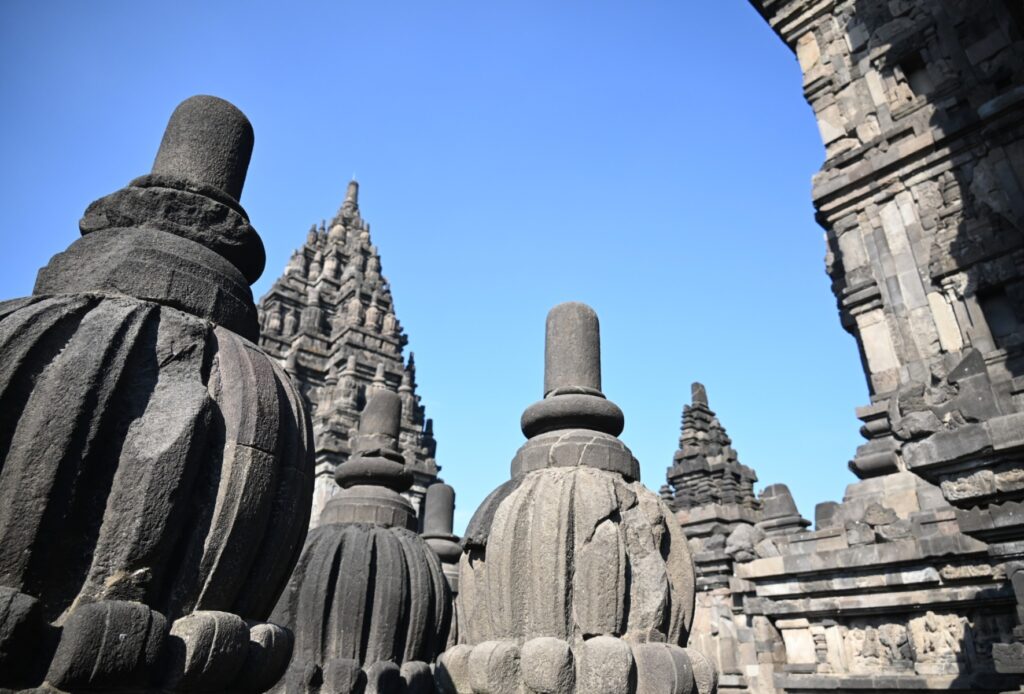
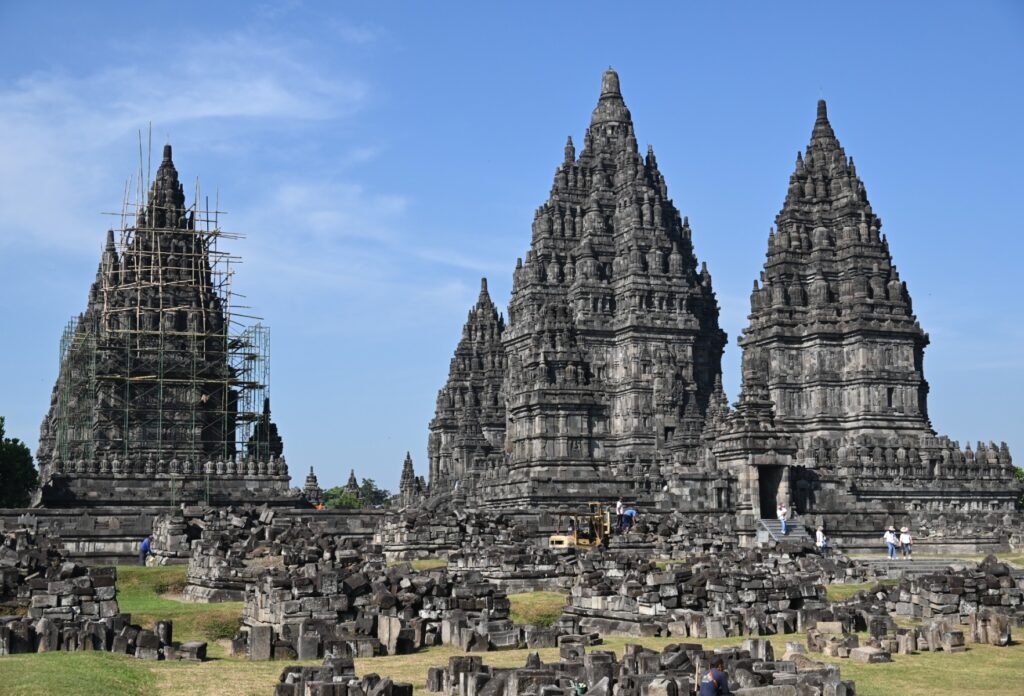
The temple is very beautiful, but the grandeur of the temples of Angkor is still very fresh in our minds—perhaps too much so. This likely prevents us from fully appreciating all its splendor.

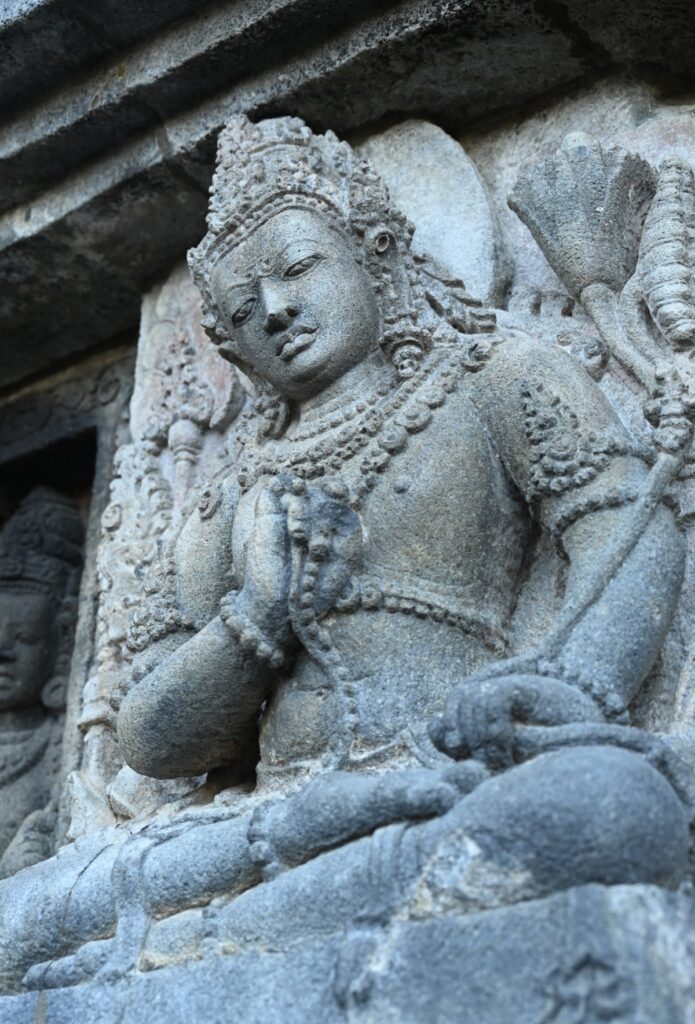

It should also be mentioned that our visit is accompanied by constant requests from Indonesian and Malaysian tourists of all ages who want to take photos with us. This hasn’t happened to us since Yunnan. We feel like Hollywood stars for a few minutes! We should have been signing autographs…


We then quickly visit the Lumbung and Bubrah temples.



Finally, we reach the end of the path at Sewu Temple. Larger than the previous two, it is likely our favorite. Fairly well-preserved, it features beautiful bas-reliefs, and the large statues flanking the entrances add a wild touch to the site. Moreover, we are alone; tourists usually only visit the first temple.


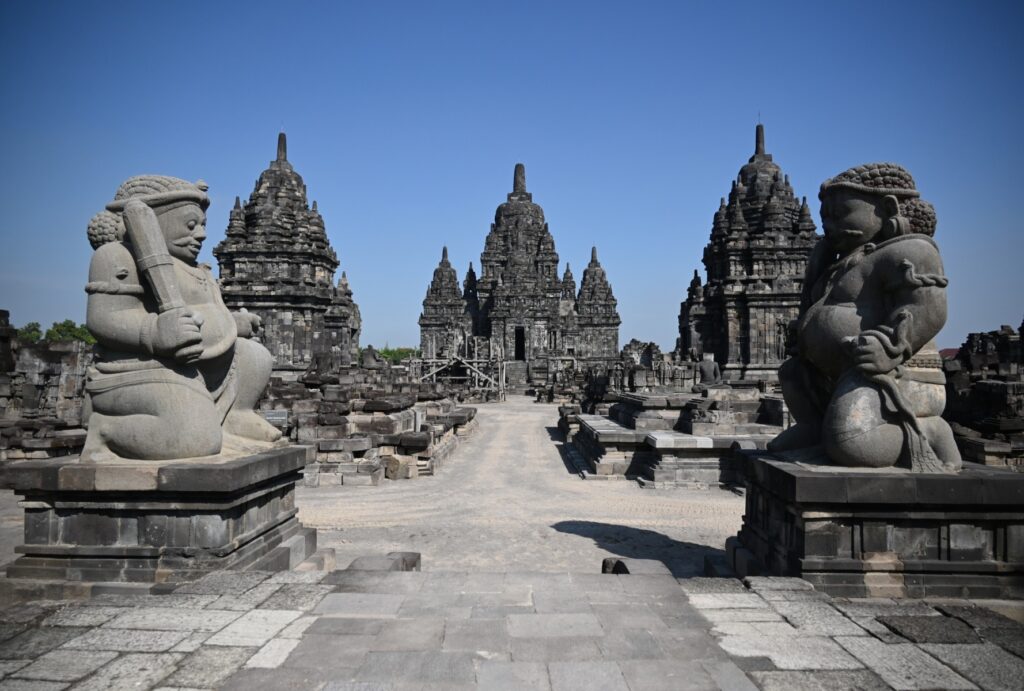
We finish with the museum. It holds little interest for foreign tourists as everything is written only in Indonesian. The visit is quickly completed.
We return to the van, which takes us near Borobudur Temple, to a tourist trap restaurant as organized tours are adept at finding. While the hygiene seems good, the prices are exorbitant. We pay five times more for a Coke than in the city. For the meal, the bill is about three times higher than in the city, yet we receive half the amount of food.
We then proceed to visit Borobudur. We have the opportunity to access the top, recently reopened. The visit (which is excessively expensive) lasts for two hours, including one hour with a guide at the top of the temple. Bamboo flip-flops are mandatory and provided at the entrance. Unfortunately, our guide isn’t very informative; most of his talk revolves around promoting meditation. We learn very little about the temple, its architecture, history, etc. Quite disappointing.
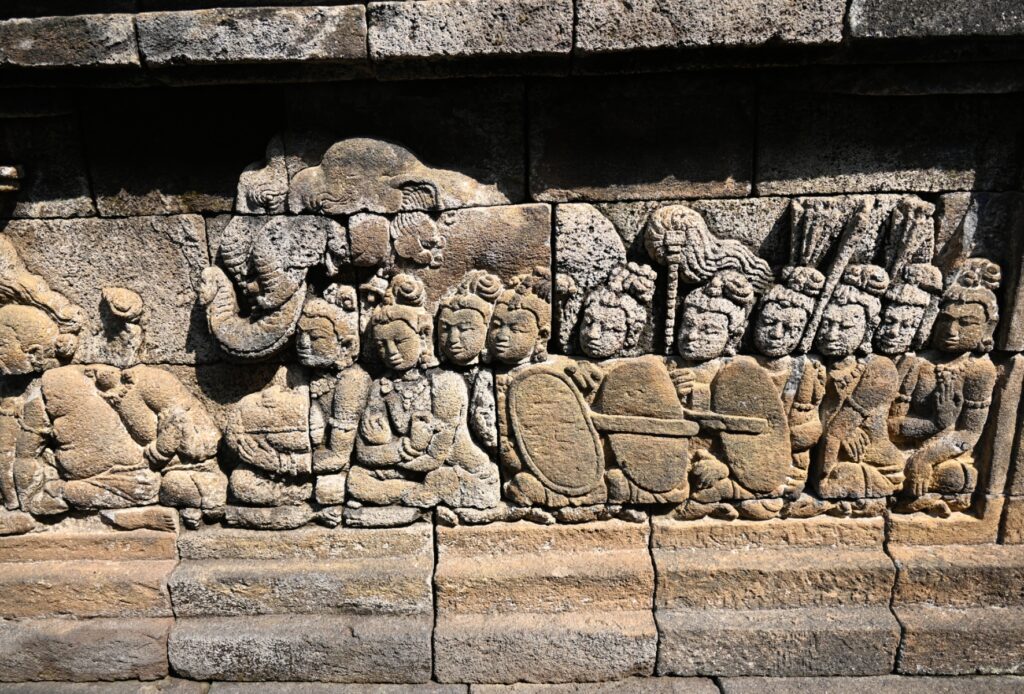



However, the temple itself is very beautiful. The most interesting part remains the top with its dozens of perforated stupas where you can glimpse a Buddha statue inside.



It is possible to purchase a cheaper ticket that only allows access to the temple without the option to climb to the top. We do not recommend this option. The price difference is negligible, and the view from below is much less impressive.


The day finished, we planned to return to the hotel peacefully. However, a mandatory stop at a coffee factory added more than 30 minutes to our schedule. We finally arrived at the hotel around 4:30 PM.
Day 3: A 4-hour train ride takes us to Surabaya.
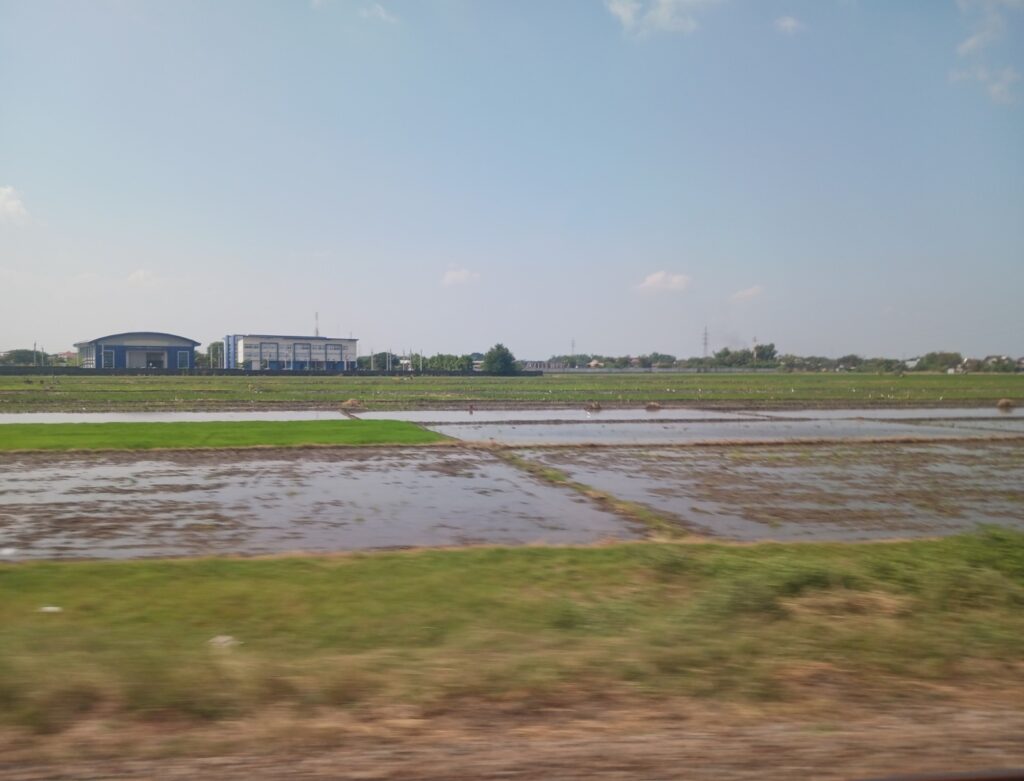
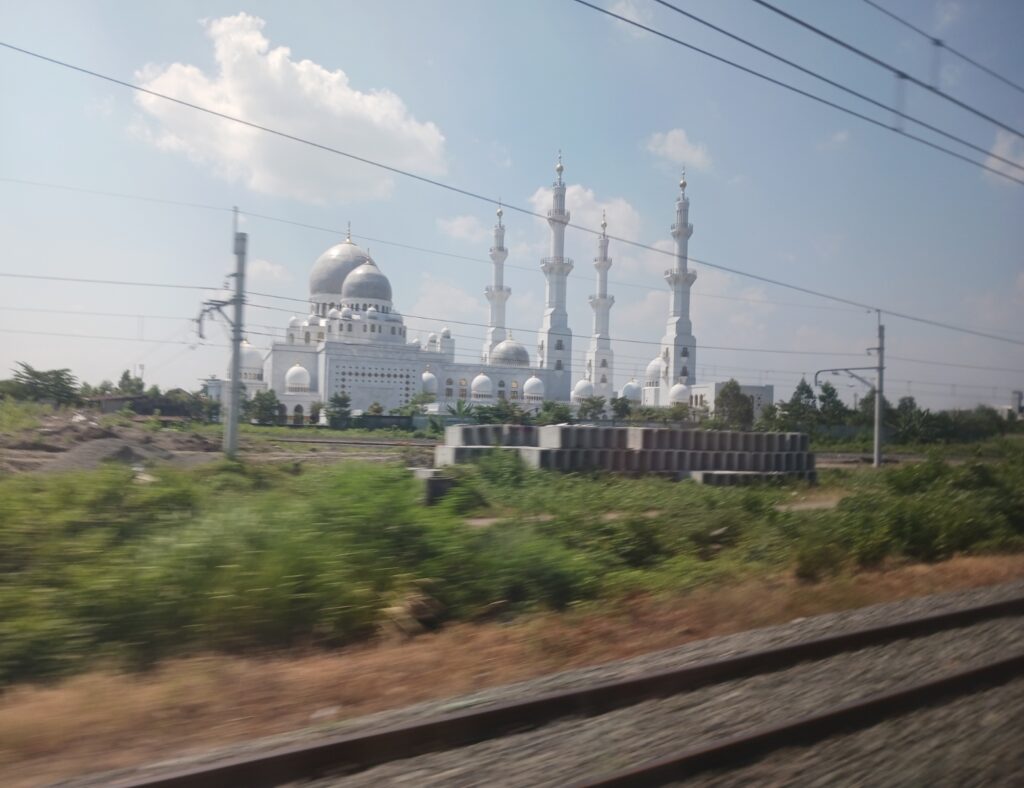

A short stop before continuing our journey towards Mount Bromo. (We could have taken the road directly, but in “round-the-world” mode, we tend to take it slower). We arrive at the hotel around 4:00 PM. The city has absolutely nothing to offer tourists. We spend the rest of the day at the hotel.
Day 4: A 2-hour train ride takes us to Probolinggo, where a car awaits to drive us to our hotel after an additional 1.5 hours of travel.




We spend the evening at the hotel and retire early. We will leave to explore Mount Bromo in the middle of the night.
Day 5: Waking up at 2:45 in the morning is quite challenging. We set off on foot towards the well-known viewpoint that offers a panoramic view of Mount Bromo (one of the most active volcanoes in the country), Mount Batok (extinct), and Mount Semeru (the highest peak in Java). The ascent to the summit of King Kong Hill should take us about 1.5 hours.
The walk is far from relaxing. We trek along the asphalt road, constantly surrounded by a stream of jeeps and motorcycles filled with tourists. We breathe more than our fair share of fine particles. We are the only ones walking; most tourists are transported because their accommodations are located outside the national park. We encounter a few daring and unaware Western tourists zigzagging on their motorcycles along the road in the night.
The asphalt road ends at a developed viewpoint. With the night still predominant, it’s impossible for us to judge if this viewpoint is worth it. So, we take the trail leading to King Kong Hill. Here, it gets a bit more complicated. The trail isn’t marked (not practical in the middle of the night) and has significant elevation gain. We encounter few tourists during our ascent (later discovering that another route used by 4×4 vehicles goes directly to the summit). At the top, the crowd isn’t as dense as expected. We find a spot with what seems to be a nice view and wait for the sunrise.


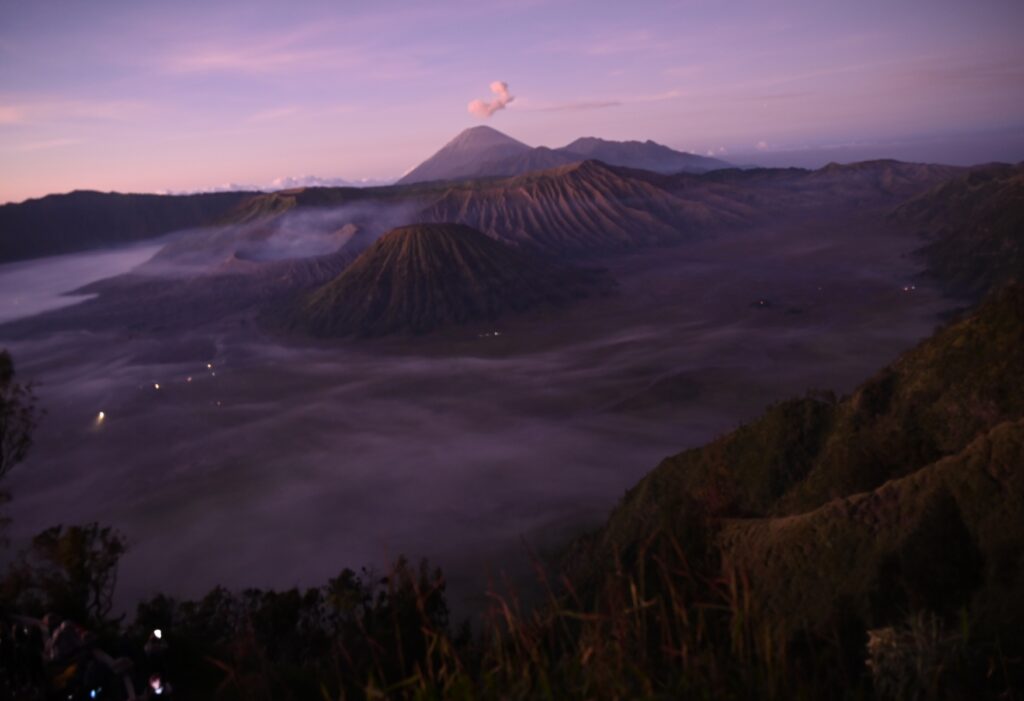


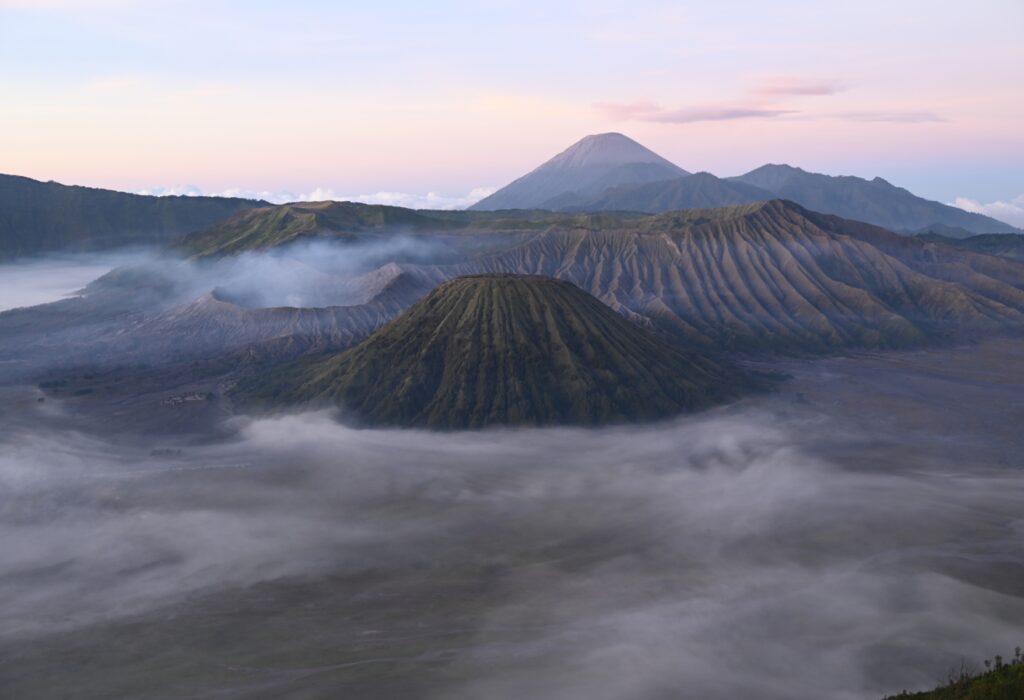
As the day breaks, we begin to see the distant volcanoes emerge. The spectacle is truly magnificent. Surprisingly, most tourists are more excited about the sunrise happening opposite the volcanoes rather than the volcanoes themselves.
Once the sun rises, we watch the fog dissipate at the foot of the volcanoes, and the tourists leave with their organized tours. Barely 30 minutes after sunrise, we are almost alone at the viewpoint. We stay there for nearly two hours before descending.
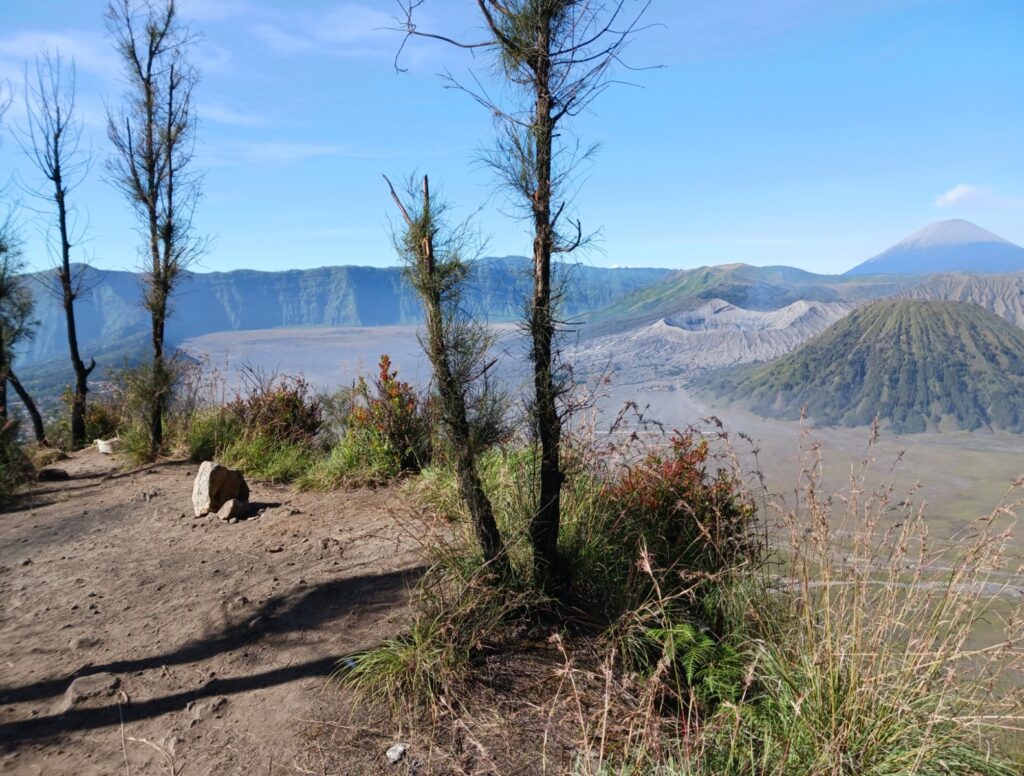



We spend the rest of the day in zombie mode: waking up in the middle of the night is no longer our thing!


Day 6: Completely out of sync from the previous day, we wake up very early. It turns out to be a blessing as it allows us to observe, right in front of our guesthouse, the plain or “sea of sand” covered in clouds. Only the volcanoes emerge from this thick mist. The sight is magnificent.


We set off on foot to climb Mount Bromo. Its name comes from Brahma, the Hindu god of creation. It rises to an altitude of 2,329 meters. What characterizes it is its immense crater, 800 meters in diameter.
To reach it, we have to cross this sea of sand. Initially, visibility is limited to about 20 meters, but gradually the fog clears and the volcanoes come into view. Once again, we are the only ones walking; all the tourists arrive by jeep directly from the viewpoint we visited the day before.

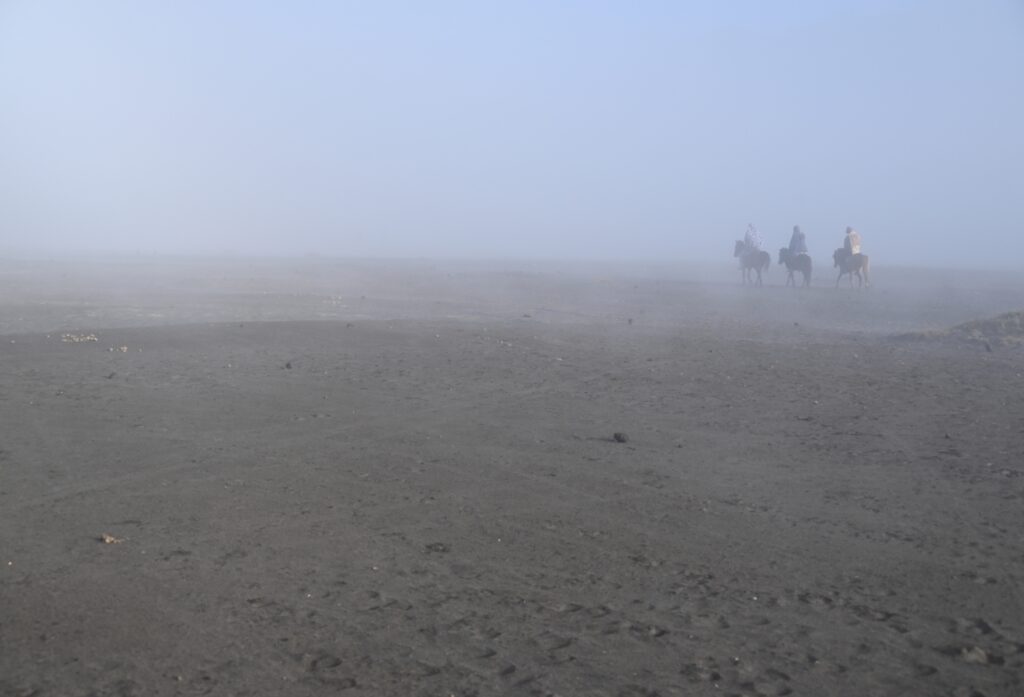
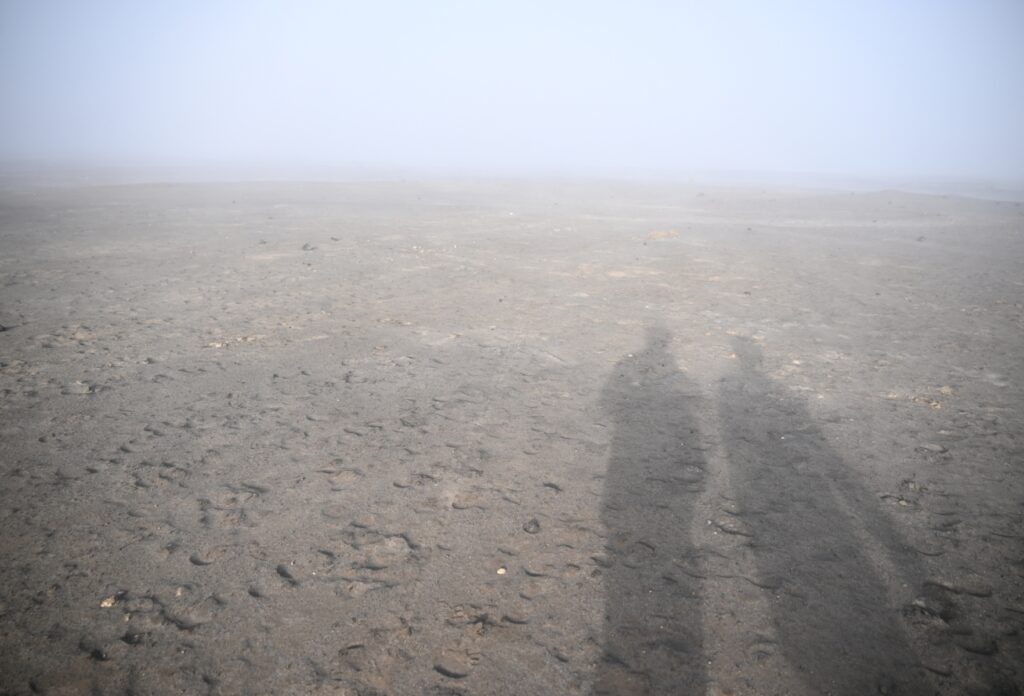
From the jeep parking lot to the base of the volcano, it’s possible to rent the services of a horse rider and travel on horseback. The horses we saw were dyed in all possible colors. Some of them appeared exhausted.

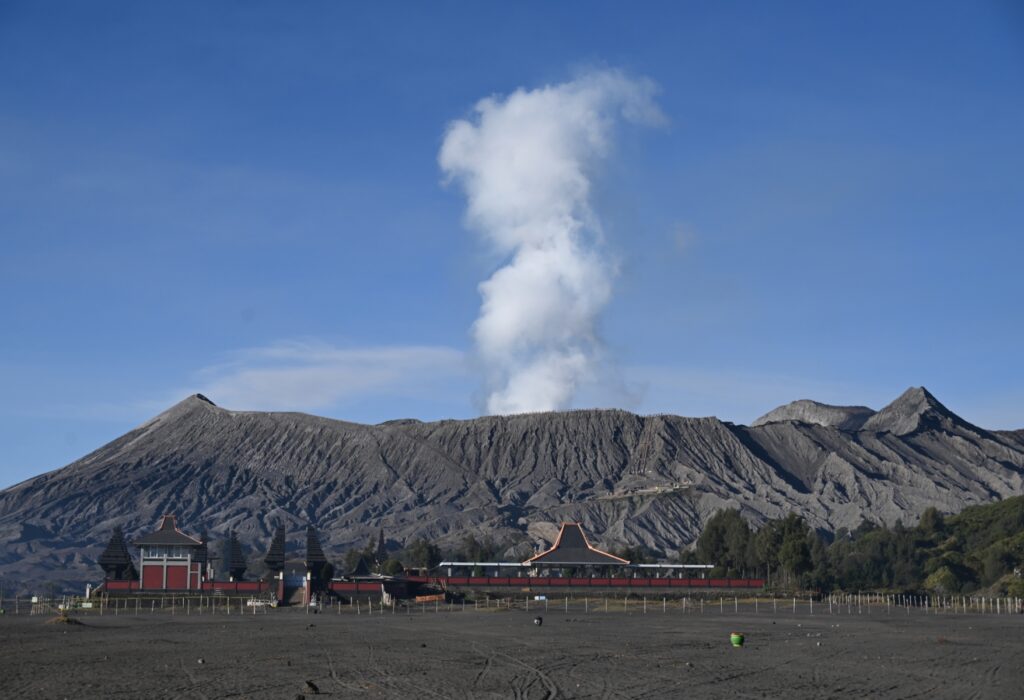
We prefer to walk the route on foot. At the base of the volcano, a beautiful staircase promises us a quite exhausting ascent (again). From our guesthouse to the summit of the crater, we walk for about an hour.
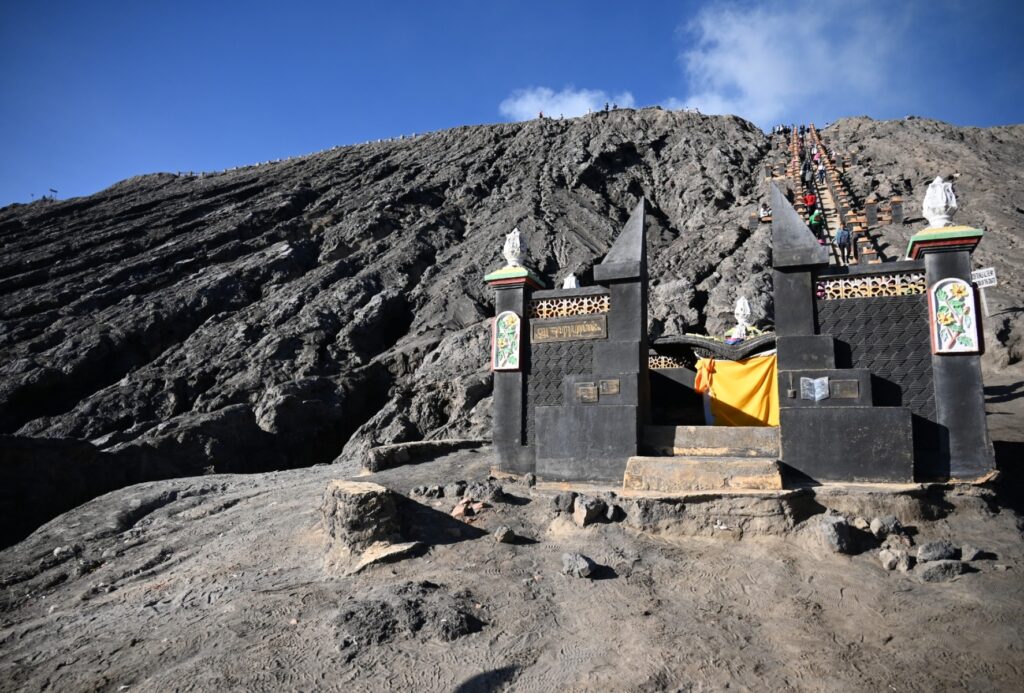

The view of the crater is magnificent. We are incredibly fortunate because the volcano isn’t emitting too much smoke, and the wind is blowing it away from us. There aren’t many tourists around either, so we can admire the view in peace. However, we remain vigilant as there are no safety measures in place.

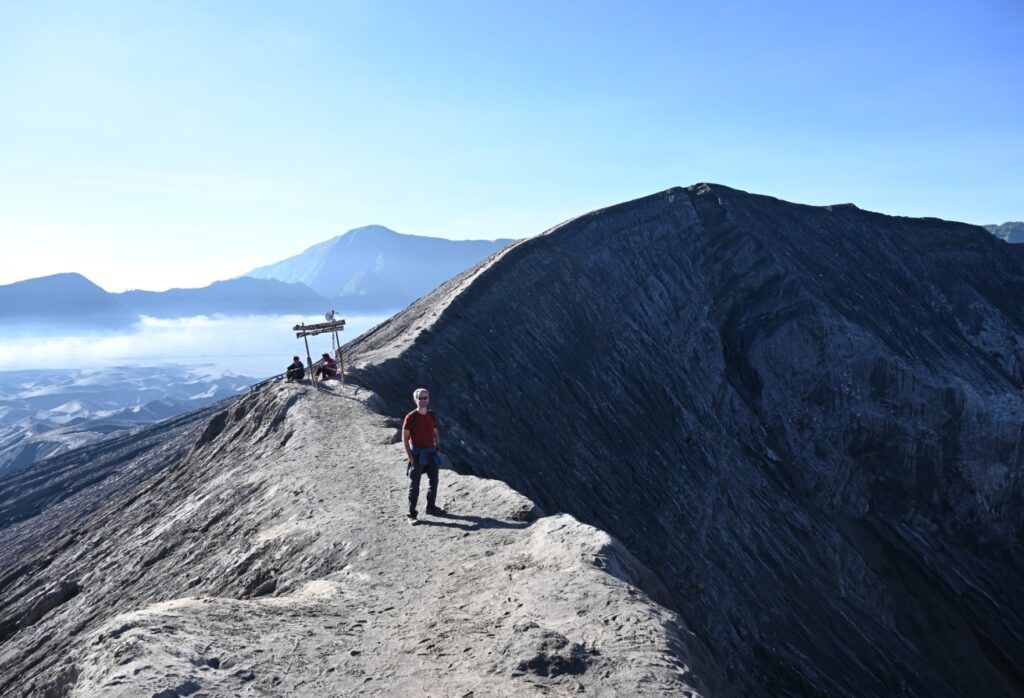
A fall into the crater or on the outer face of the volcano would be easy, especially since the path along the crater edge is sometimes narrow. It’s now impossible to walk all the way around the crater; only a portion of the path is accessible. Nevertheless, this doesn’t stop three groups of tourists, who seem to be influencers, from trying to bribe the guards to access the restricted area.

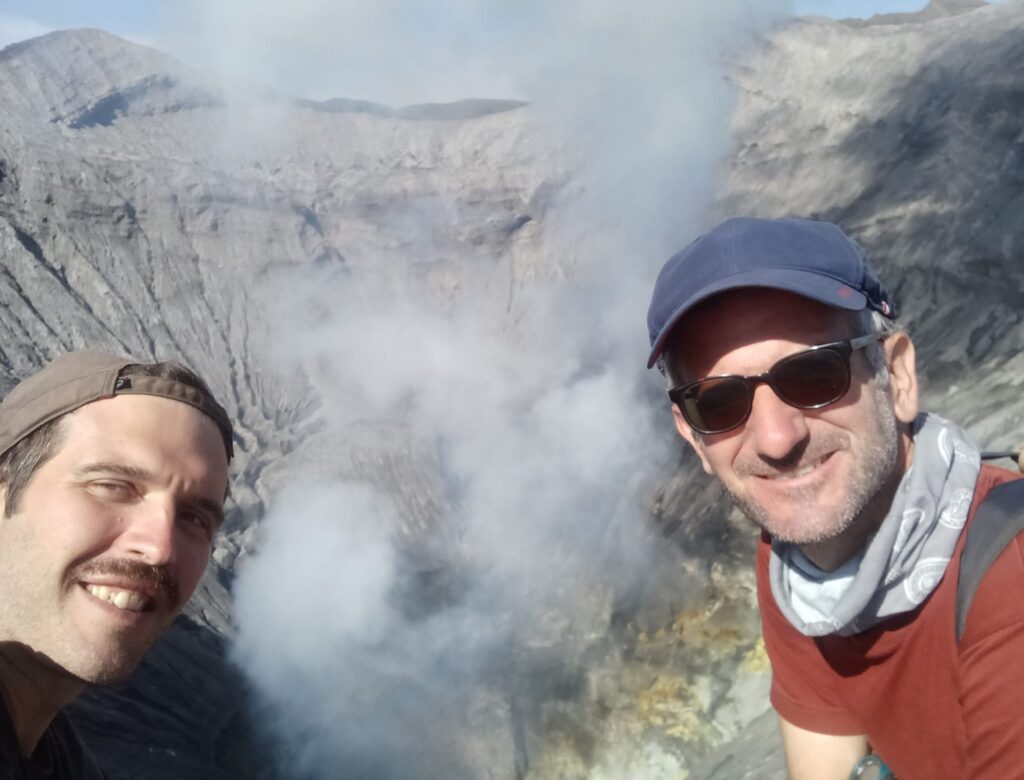
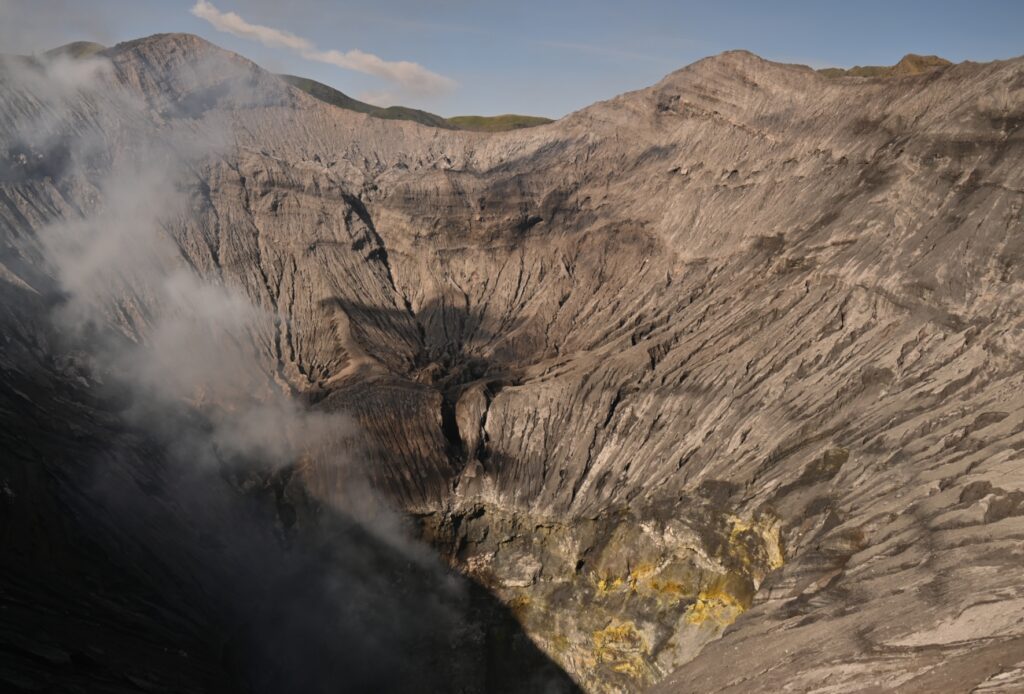
Despite everything, the spectacle is striking. We stayed at the top of Bromo for about two hours before returning to our room.
A car then brings us back to the city from where we take the train to Banyuwangi.


We cover the 200 km in 4 hours with rather basic comfort.

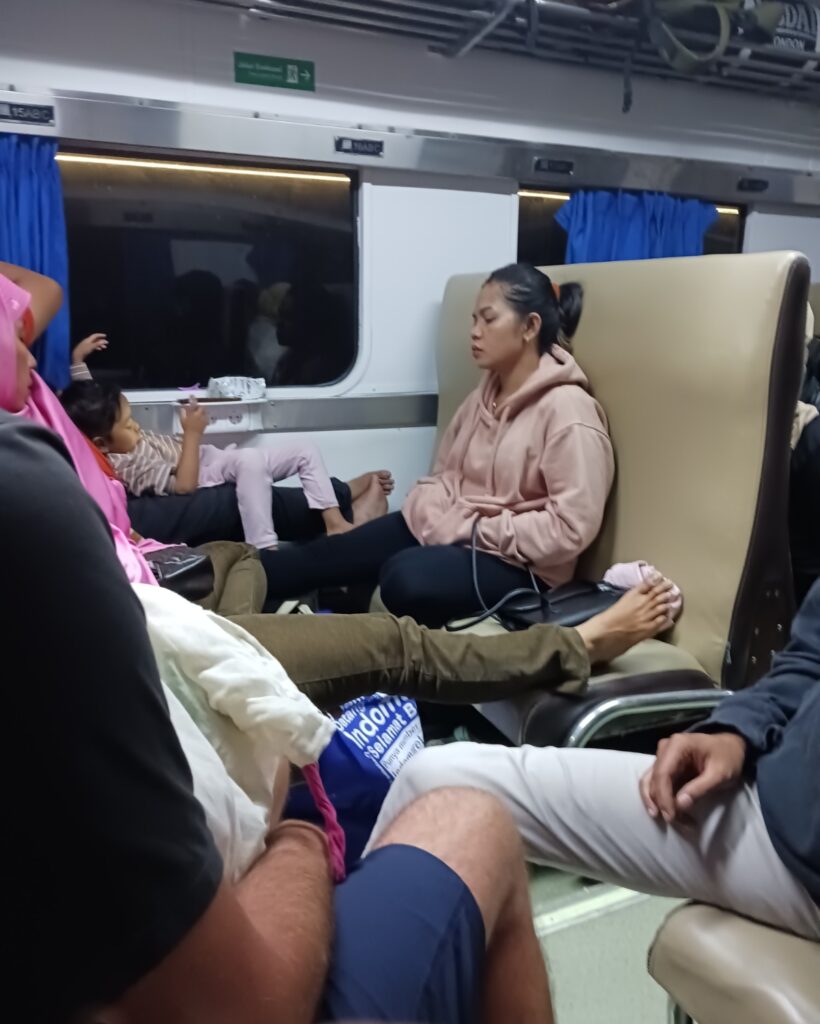
Day 7: We had planned to follow the majority of tourists and succumb to the pressure of influencers by climbing Mount Ijen. This volcano is known for its crater filled with an acid lake. The ascent is reputed to be very difficult and dangerous. It is done at night, of course, with departure from the city at midnight…
Since the lake emits toxic fumes, it is mandatory to obtain a medical certificate from a local doctor before climbing. For a fee of a few thousand rupiahs, they weigh you and take your blood pressure before handing over the precious permit. In other words, it’s more like a disguised tax. Also due to the fumes, the ascent is done wearing a gas mask.
In short, all these constraints and the fact that we are still quite tired from our early morning wake-up lead us to decide to skip it and enjoy a good night’s sleep. We’ll have the opportunity to see other volcanoes elsewhere in the world.



In the late morning, we take the ferry connecting Java to Bali. The distance to cross is not even 6 km. However, it takes us more than an hour to make the crossing. On the other side, we meet a driver who takes us to our guesthouse in Munduk, on the northern part of the island. The journey by road takes us two hours.
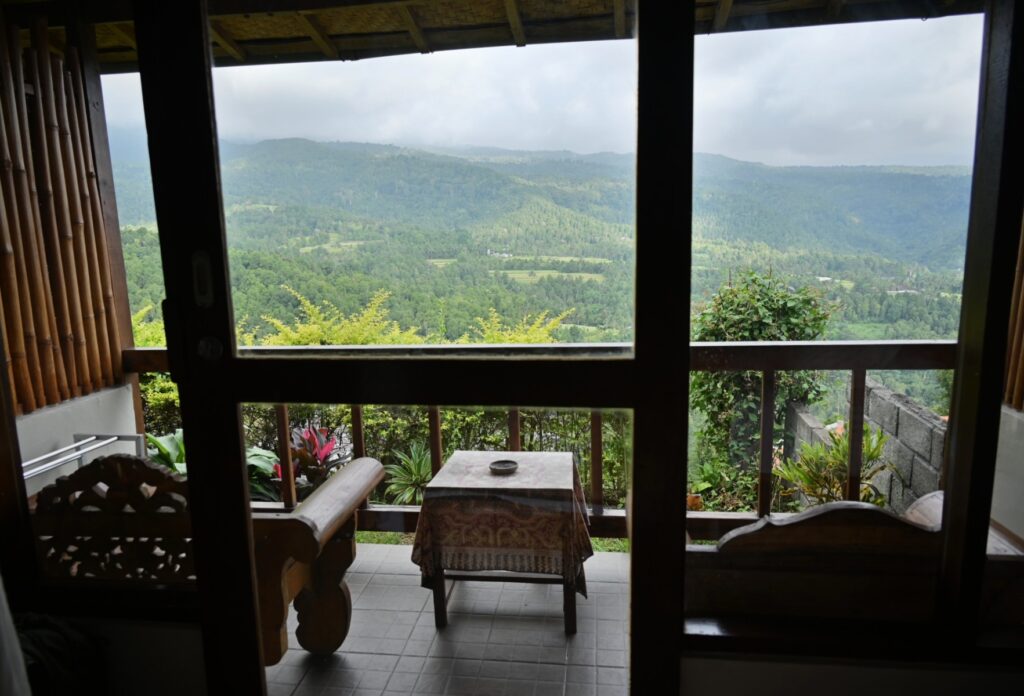

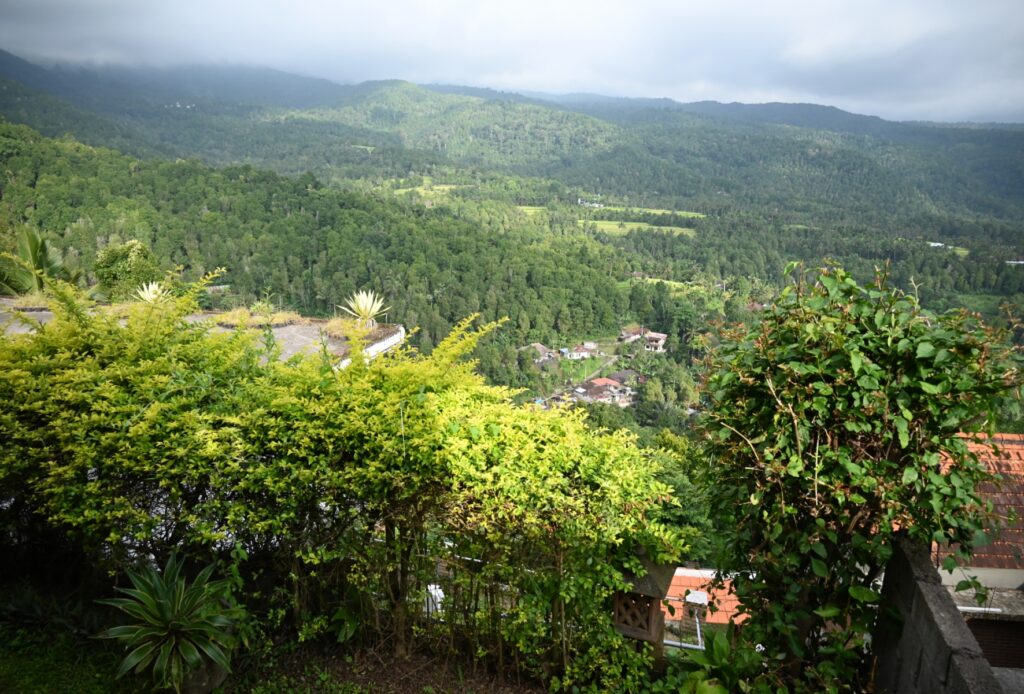
Day 8: We chose Munduk because we wanted a slightly more wild and less touristy destination (most tourists flock to Ubud and the south). After an excellent breakfast with a magnificent view from the restaurant at our guesthouse, we set off on foot to hike to the three waterfalls. It’s just a ten-minute walk to the start of the trail. However, we have to walk along the main road, hoping not to get run over by a motorbike.
The trail winds through the greenery. The walk is very pleasant amidst lush vegetation and colorful flowers. Dragonflies and butterflies, sometimes as large as a hand, accompany us along the way.
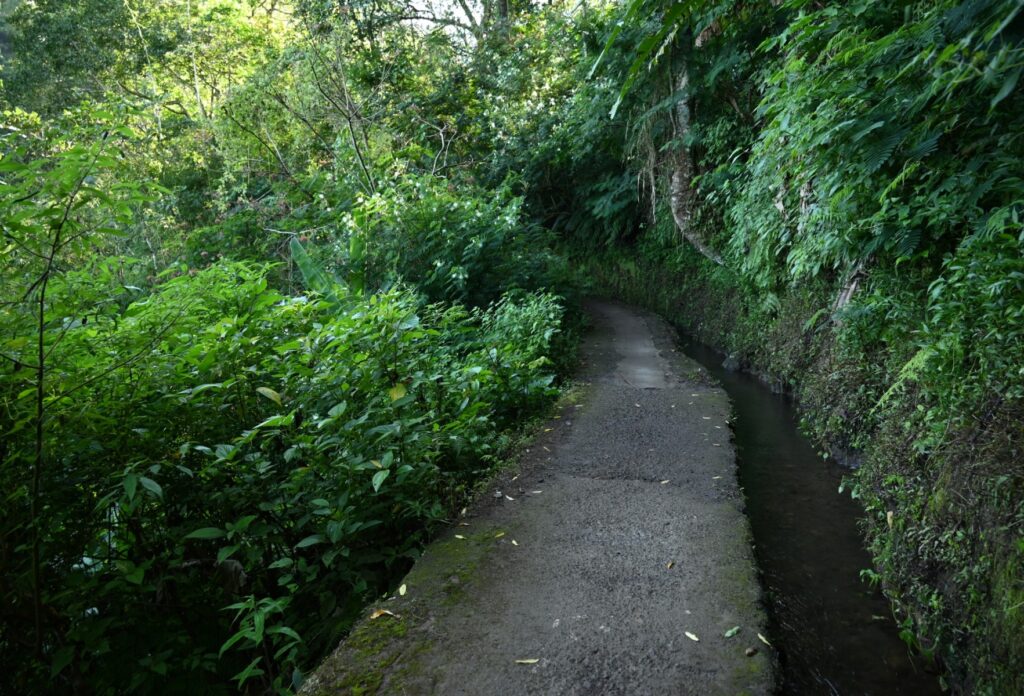
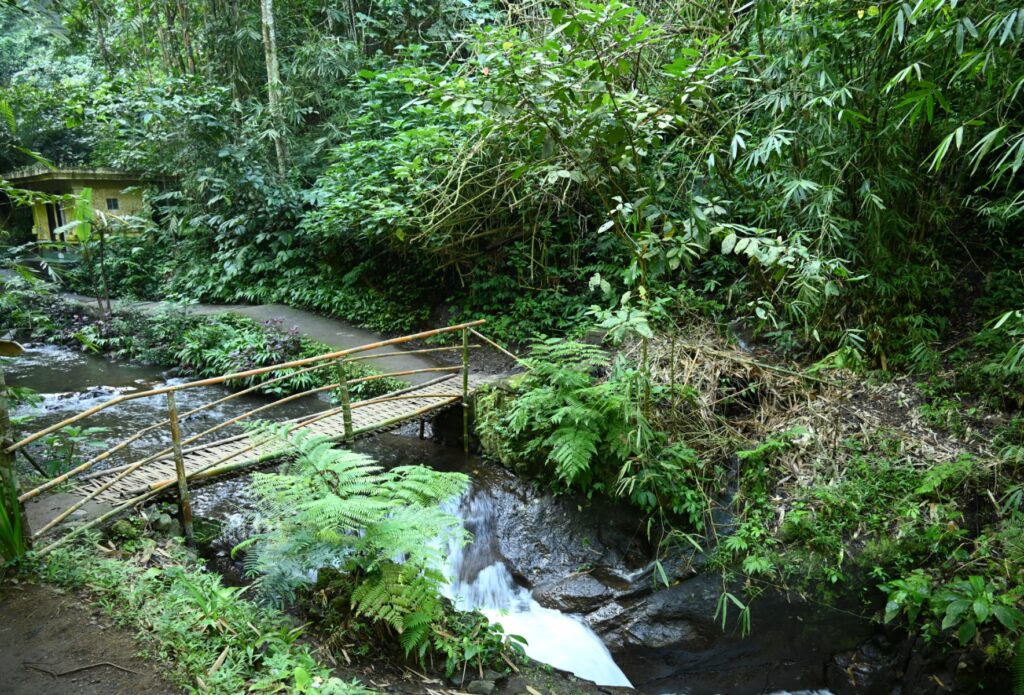
We pass through coffee, cocoa, and vanilla plantations.

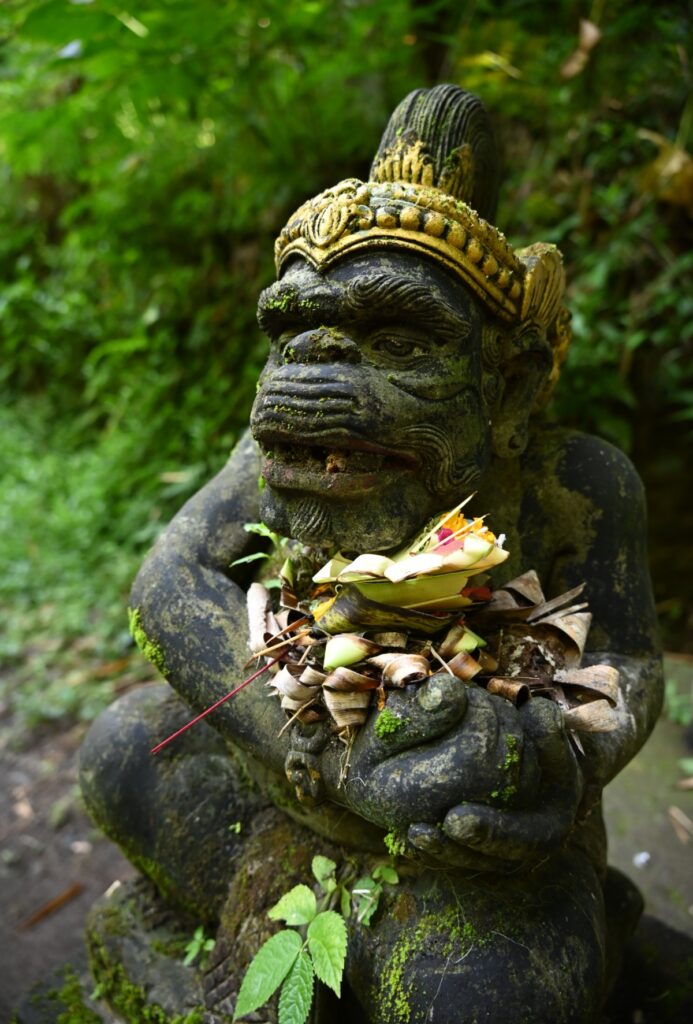

Along the road, we also come across several stalls selling drinks, souvenirs made in China, and a variety of spices that are clearly dried on-site.


We start with Red Coral waterfall. It’s easy to access and quite impressive.



We encounter Balinese people engaged in Hindu rituals there, and we also see macaques attempting to steal the offerings.



The second waterfall is Labuhan Kebo. A few steps lead us down to the waterfall below. It is arguably the wildest of the three. The waterfall gushes out from the surrounding greenery like a jewel box. The place is also ideal for those who wish to swim. For our part, we opt out of swimming and instead find a bench with a lovely view of the waterfall.
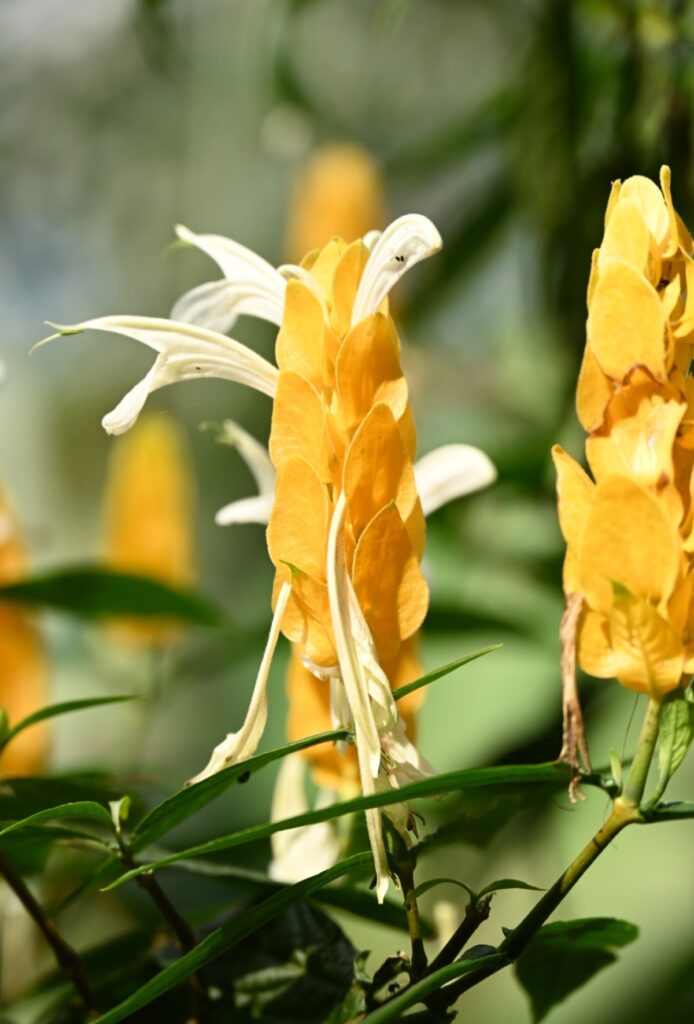
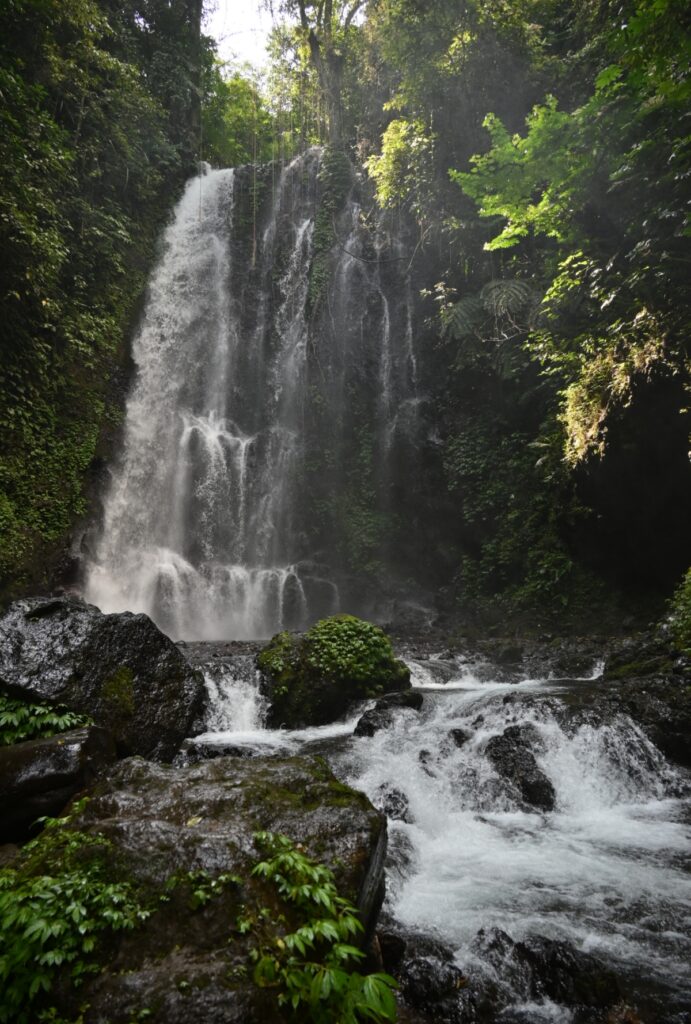

We finish with Air Terjun Melanting. It is the most difficult to access. While the descent is via a fairly well-maintained staircase, the ascent is challenging. There are many steps, it’s humid, and very hot. Nevertheless, the view of the waterfall is once again breathtaking. You’ll also easily get wet due to the numerous spray.

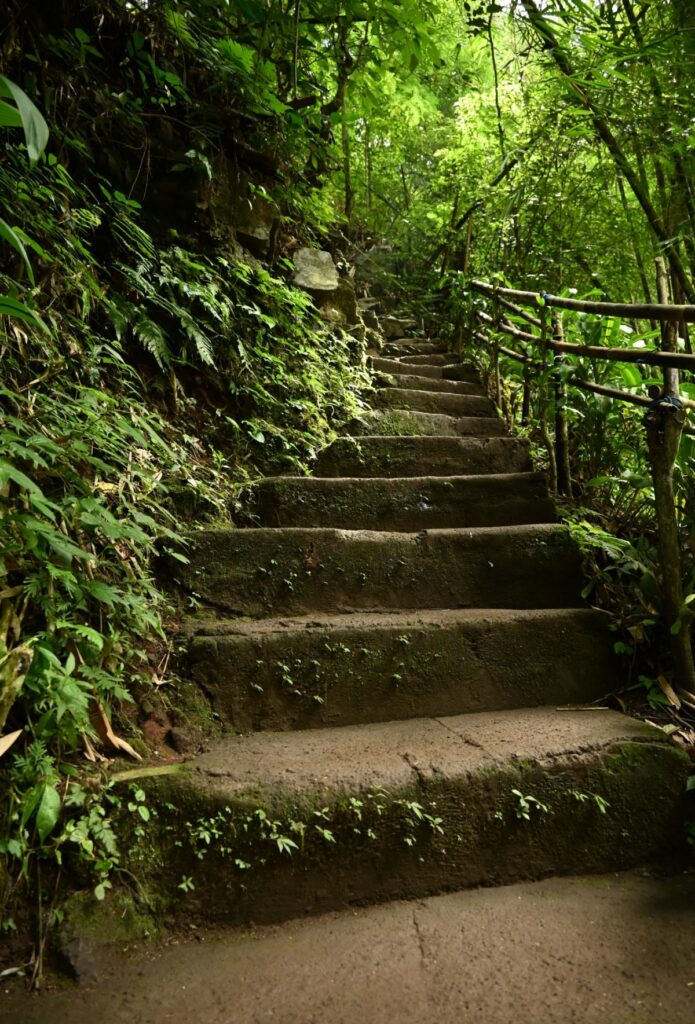

The walk as a whole is very pleasant. The scenery is truly magnificent, and there are few tourists around. The only regrettable thing is the excessively high prices at the waterfalls.


We spend the afternoon enjoying our balcony.
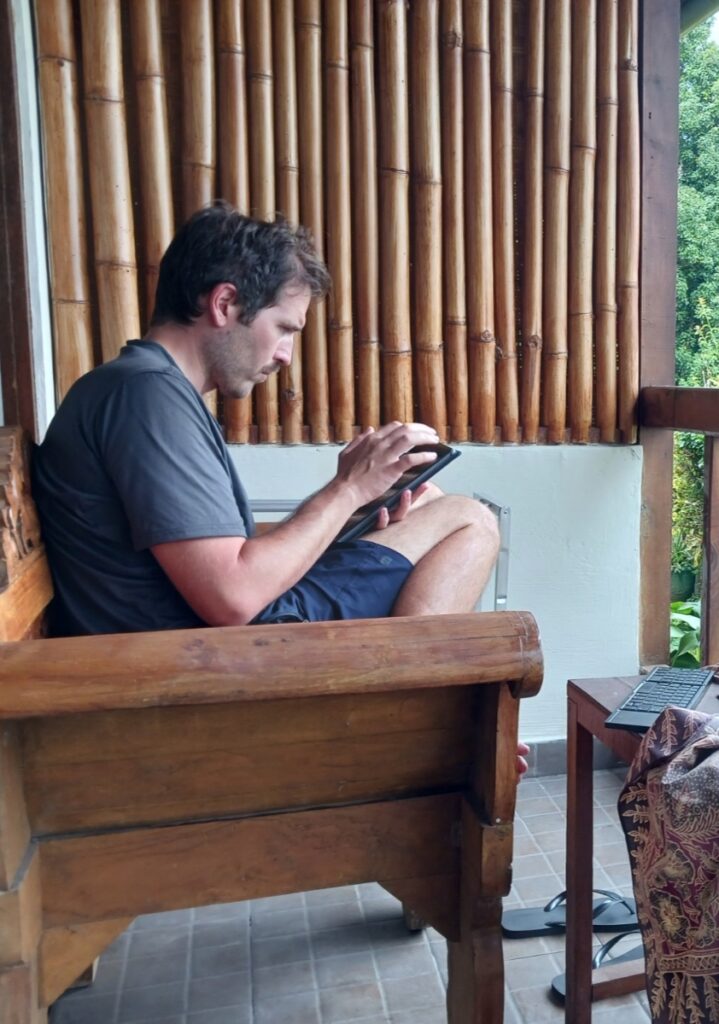

Day 9: We head towards the Dayang and Munduk rice terraces located just below our hotel. The season is well advanced and the rice has grown significantly. Unfortunately, we don’t have enough elevation to fully appreciate the terraced crops.
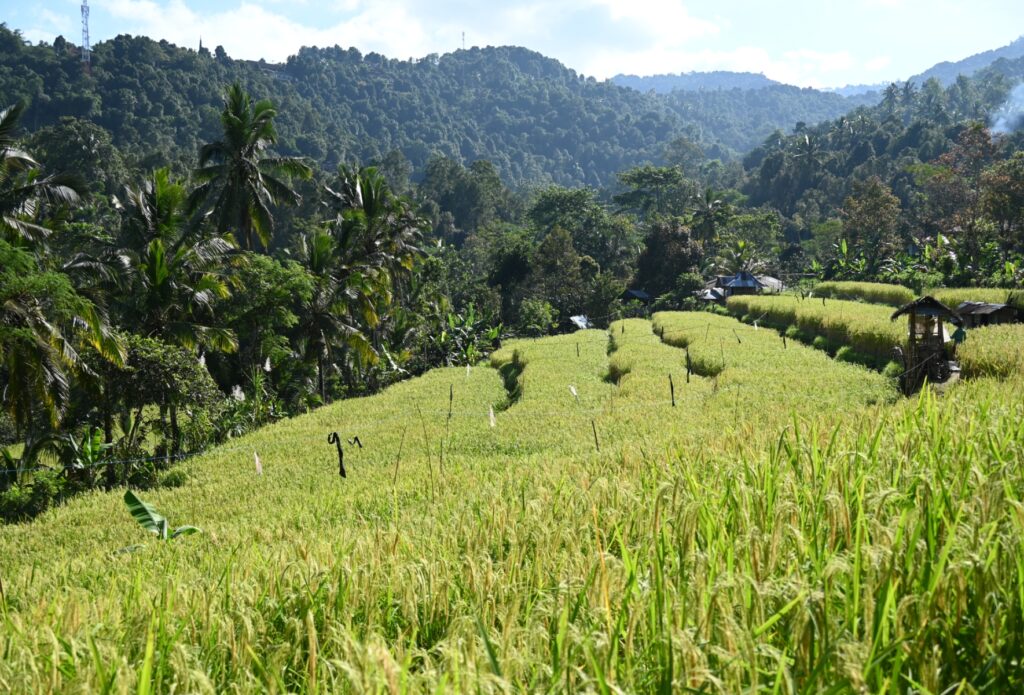

It’s quite fun to walk along the plantations, a first-time experience for both of us. The farmers we meet there are all kind and smiling. We stroll around for about two hours.



We then return to enjoy the view from the restaurant terrace to make progress on the blog.
We eat delicious nasi goreng and bakmie goreng (fried rice and fried noodles with chicken and vegetables) there.


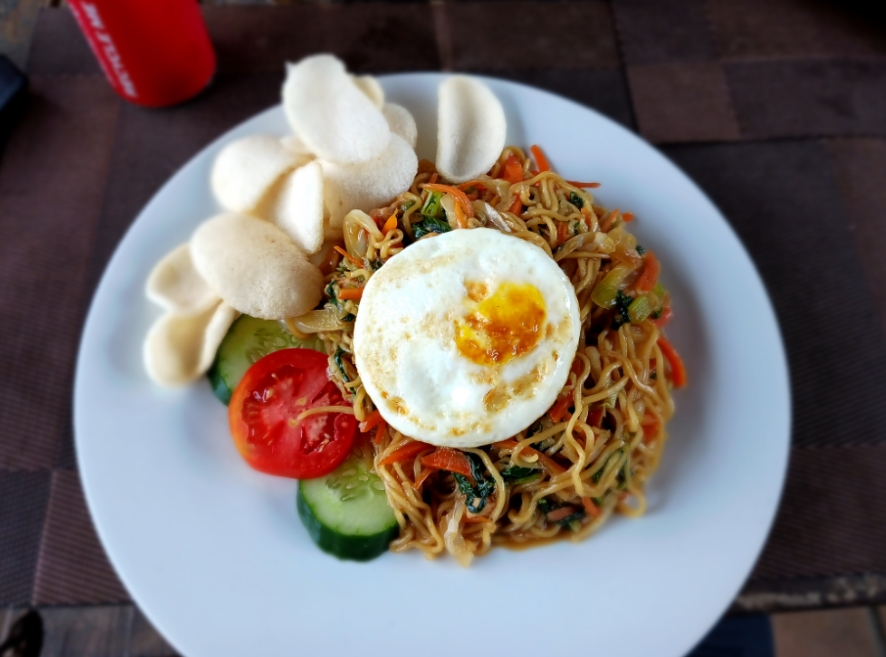
We finally meet our driver from the previous day, Yoga, who takes us to Ubud.

On the way, we make a stop at the Hindu complex Puru Ulun Danu Bratan, known for its pagodas built on an island. The site is crowded and shrouded in fog when we arrive, but fortunately, it eventually clears up. After taking photos of the pagodas, we find the site offers little else of interest.



The temple is closed to tourists (like many temples in Bali). The numerous snacks, children’s play areas, and souvenir shops greatly diminish the spiritual atmosphere of the place. We spend 30 minutes at the site.
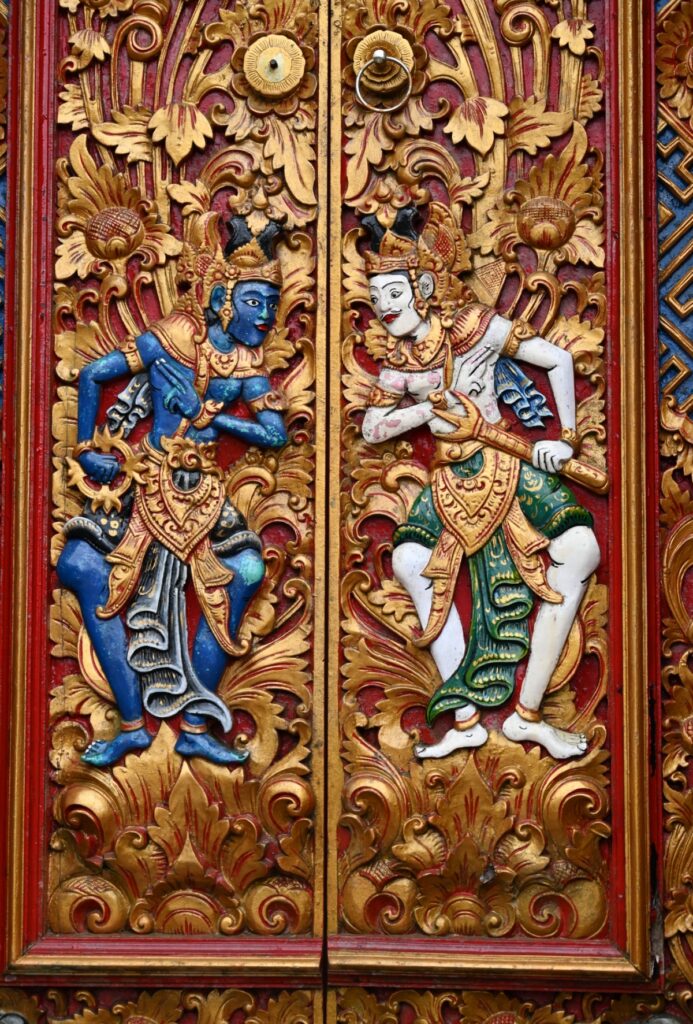


It then takes us 1.5 hours to cover the 35 km to our hotel.
Day 10: Our hotel is located right in the center of Ubud. So, we head (still on foot) towards the Ubud Palace, the former residence of the royal family. The site is of considerable size, but only a small part is accessible to the public. However, we can see some beautiful sculptures depicting monsters (or deities?). The good news is that entry is free.
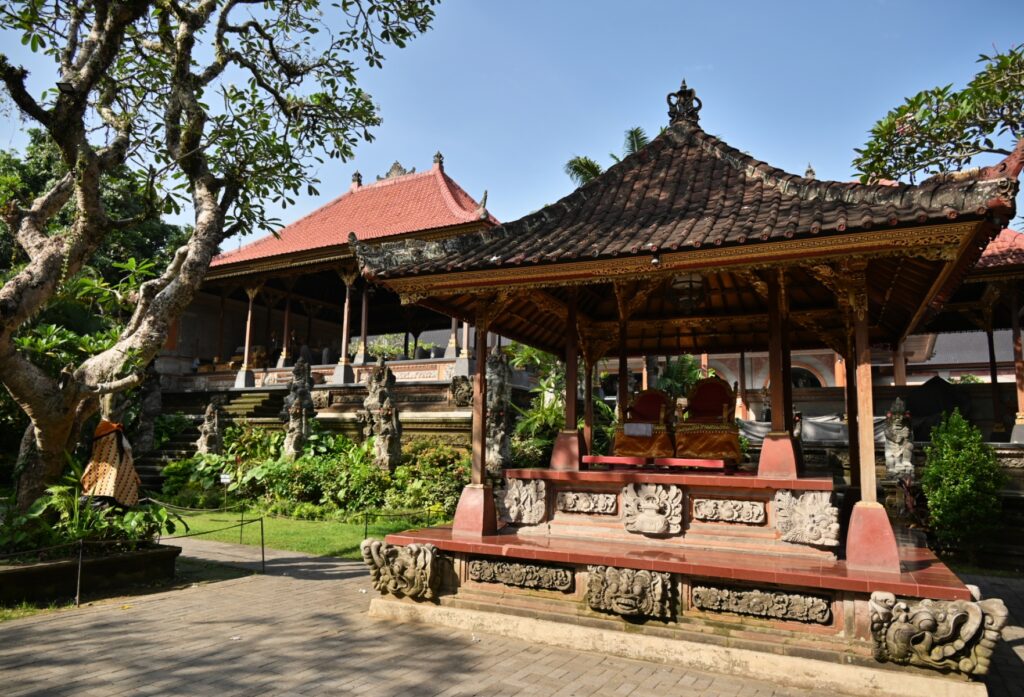

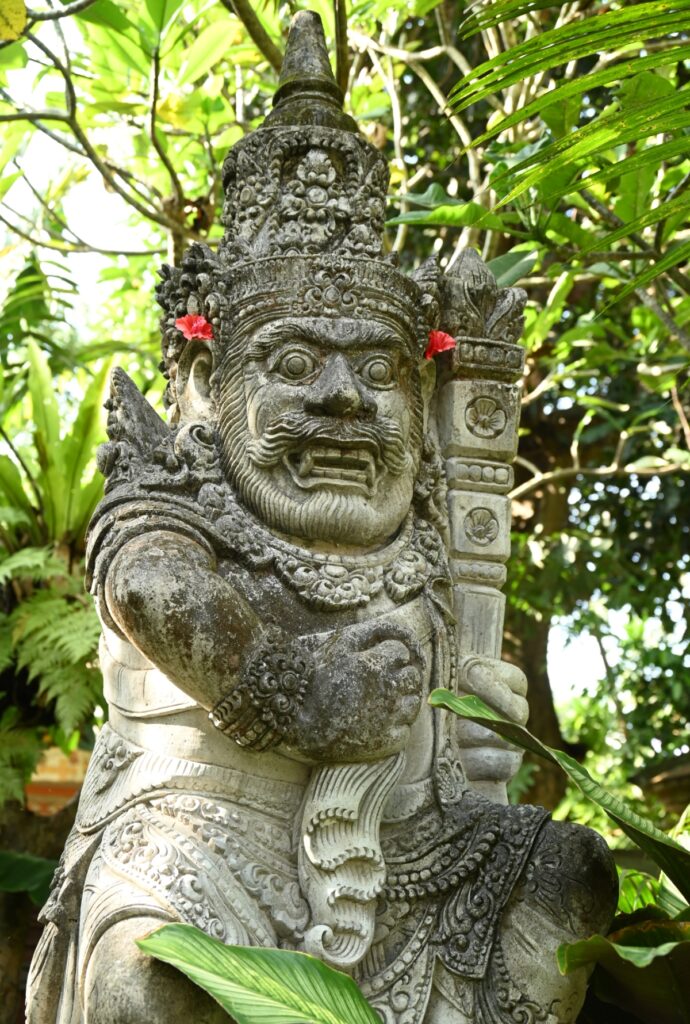

We then walk towards the Monkey Forest. The walk is quite unpleasant as it takes place on the main road in the center of the city. The numerous motorbikes and cars create a constant noise, not to mention the significant number of taxis offering their services.
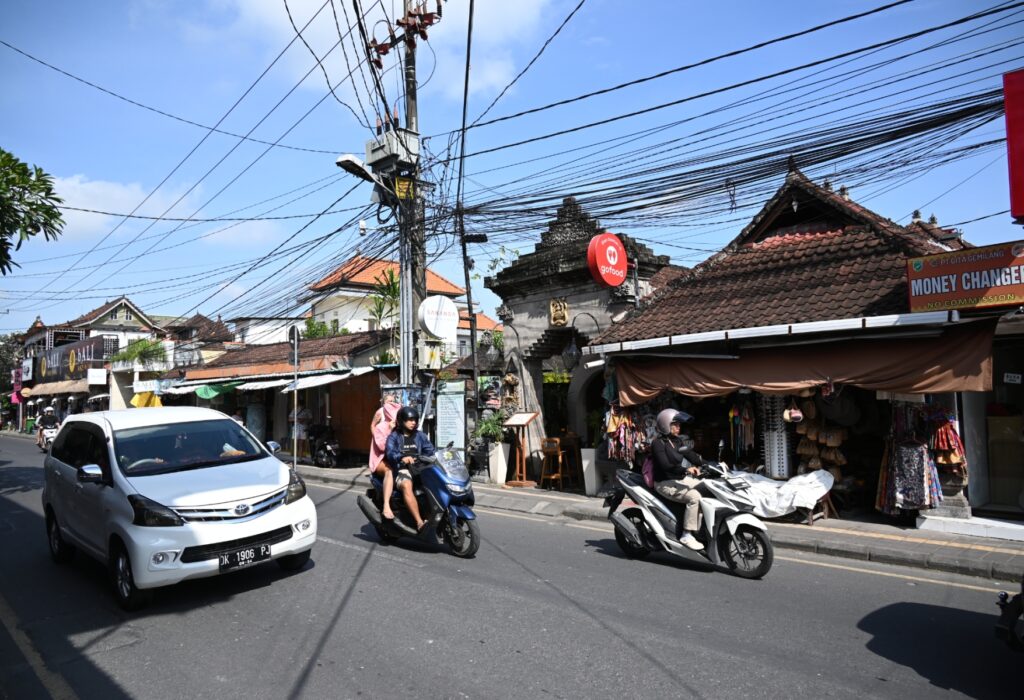

The Monkey Forest is a natural reserve that houses over 1200 macaques, as well as a religious and sacred complex. The concept is simple: visitors walk along trails and inevitably encounter monkeys. Stone statues of deities stand throughout the area. A temple (obviously closed to tourists) is also visible.

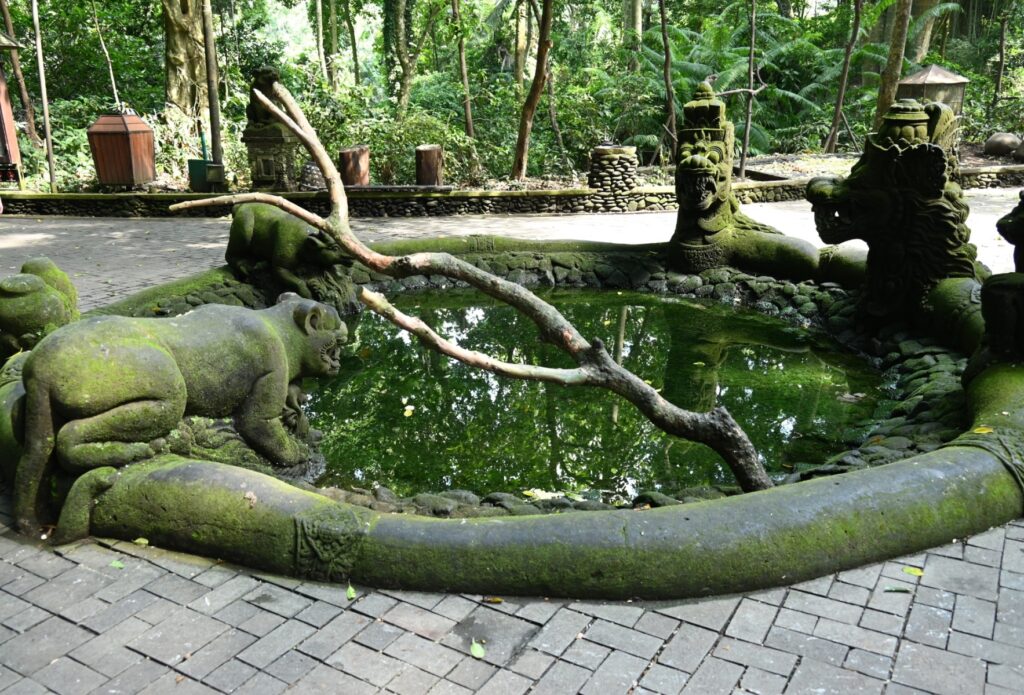

The monkeys exhibit a mix of territorial defense where they may charge at tourists, yet they also show indifference and allow themselves to be photographed without much concern.


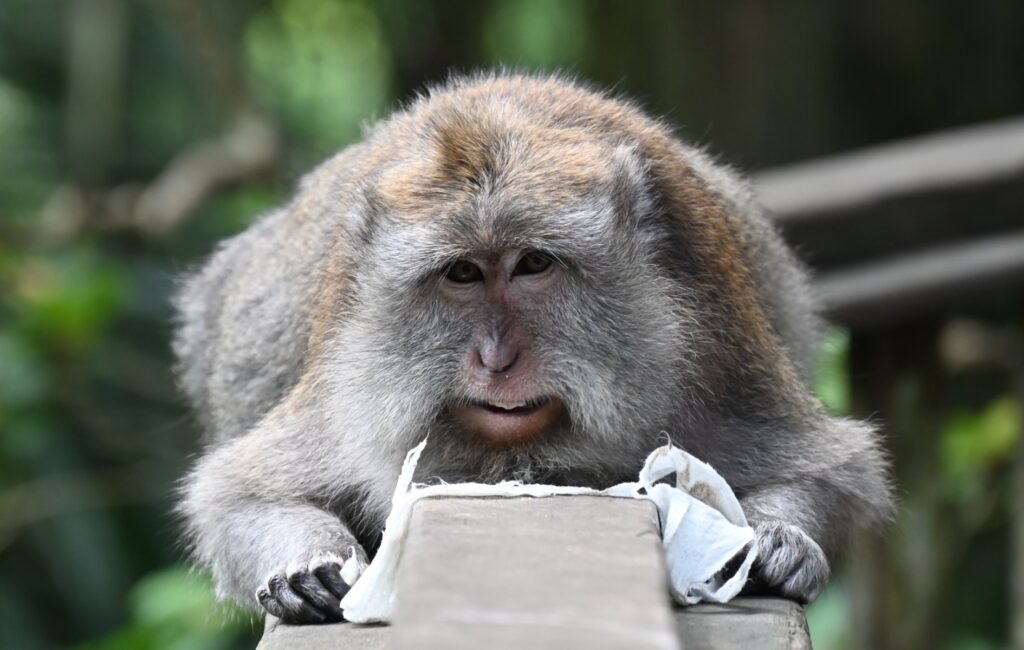
They are also quite thieving: the number of them we saw stealing water bottles from tourists was impressive.



Some monkeys also have no issue climbing on passing tourists and offering them a grooming session…
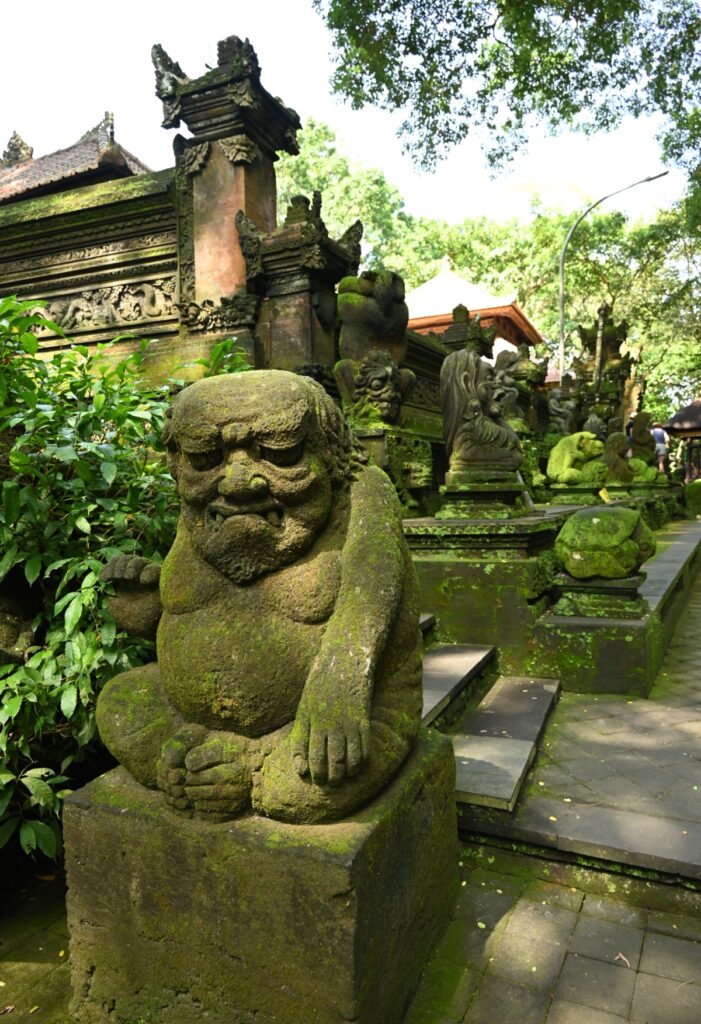


We stay on the site for more than three hours.
We spend the afternoon in the hotel pool, although we are occasionally disturbed by monkeys coming to drink or fight nearby. It’s not always very peaceful!



Day 11: In the morning, we spend just under two hours walking around the streets near our hotel. The walk is not enjoyable at all. On the main street, there’s constant chaos with honking horns and engine roars. On side streets, we have to constantly dodge motorbikes speeding past us.
We head back to the hotel for lunch and lounge on our balcony while waiting for our massage appointment!


It’s impossible to be in Bali without enjoying the expertise of its inhabitants in massages and relaxation. So, an hour of Balinese massage awaits us. We are kneaded vigorously like two balls of dough. We are even tenderized like pieces of meat: the masseuses punch every part of our bodies. Benjamin will actually leave with a bruise on his foot…

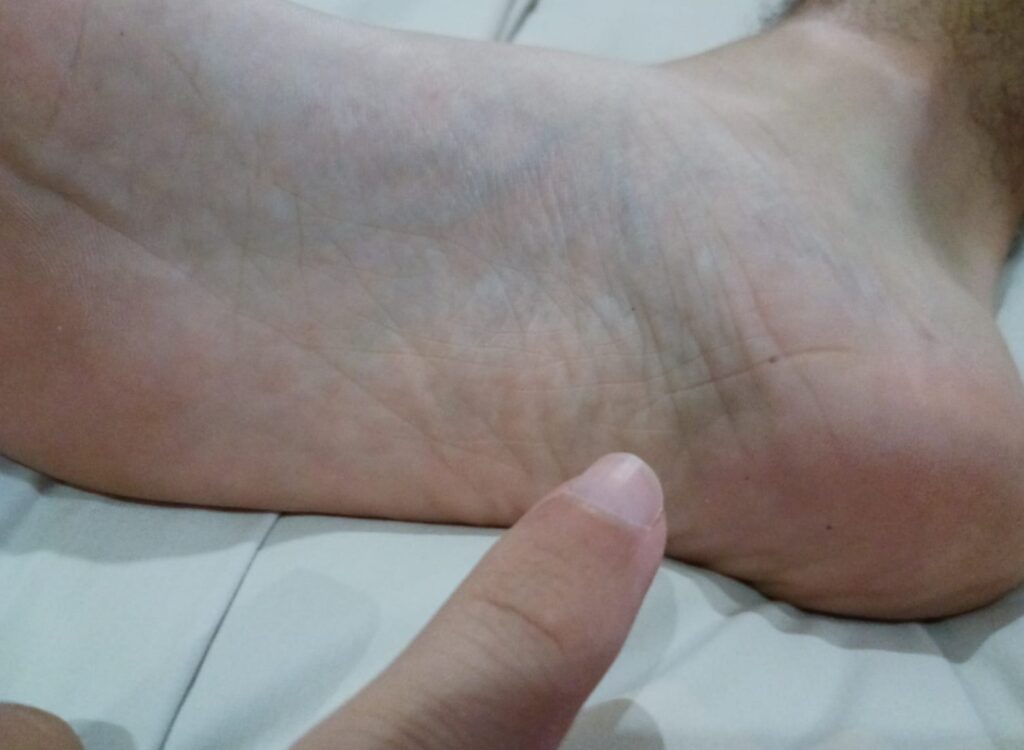
Even though privacy is limited (the cubicles separated by curtains remind us of hospitals), the experience remains relaxing.


In the evening, we attend a traditional Balinese dance performance. For 1 hour and 15 minutes, five acts featuring instrumental numbers and male and female dances unfold.
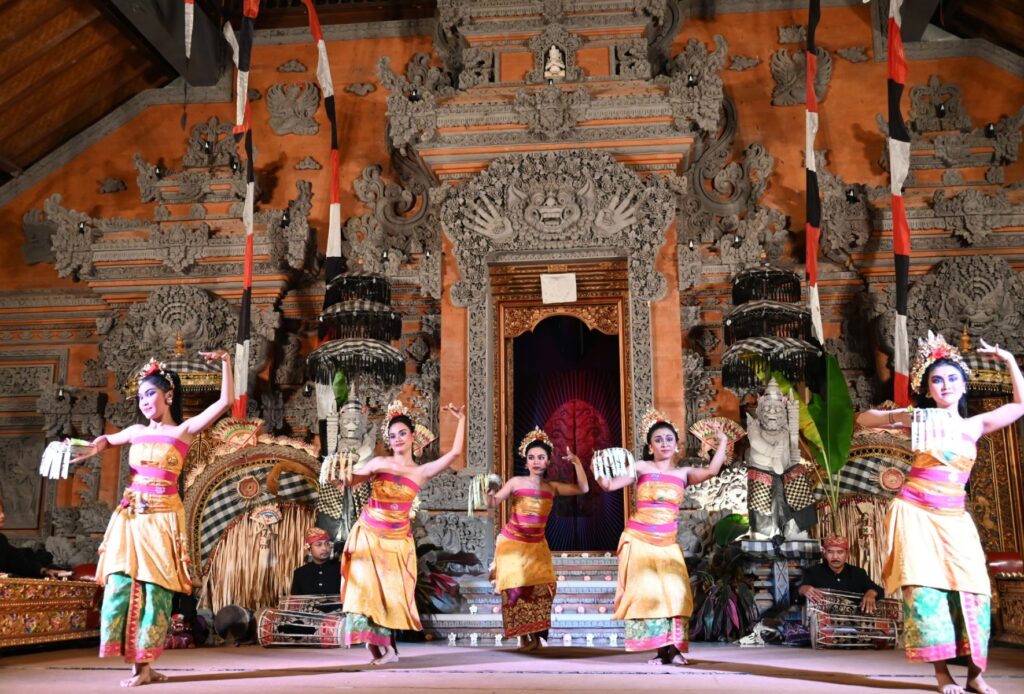


The dances are astonishing. The dancers have their eyes wide open. They also give the impression of having a huge scoliosis and constantly wave their hands as if they were scissors, all in magnificent costumes. It’s different, it’s traditional, it’s everything we love. The evening was fantastic.


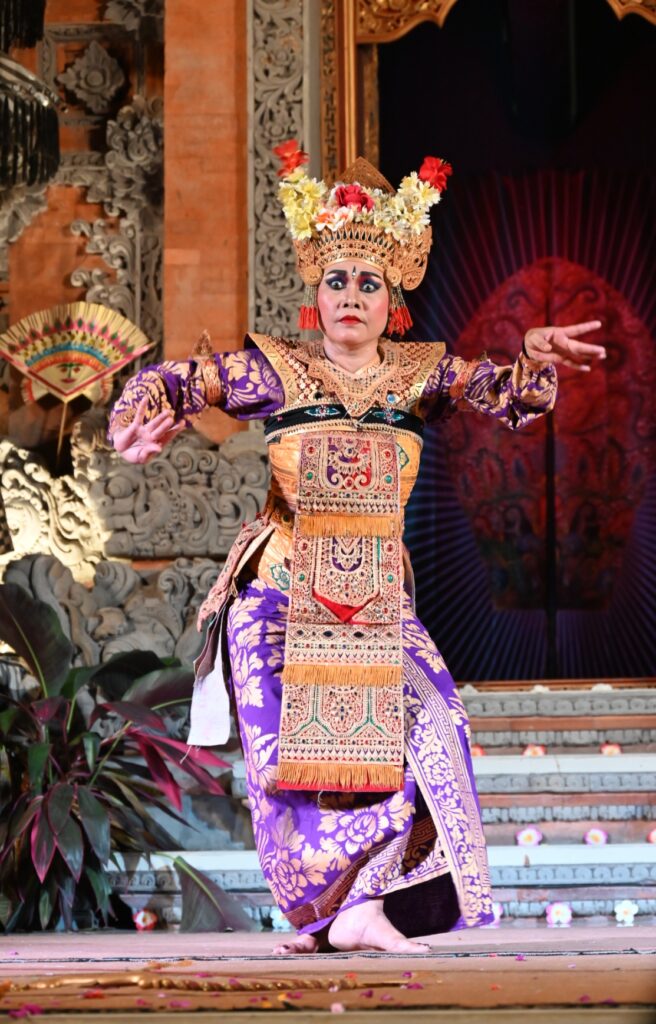
Day 12: We spend the morning shopping. First, we visit the artisan market. Normally, when we say artisan, we mean handmade. However, in this case, that’s not true. All the stalls sell exactly the same products, most of which are packaged in plastic. Everything seems to have been shipped from AliExpress. We end up in the surrounding streets where the products are the same but prices are lower. If we’re going to buy made in China goods, might as well do it at the lowest price possible…

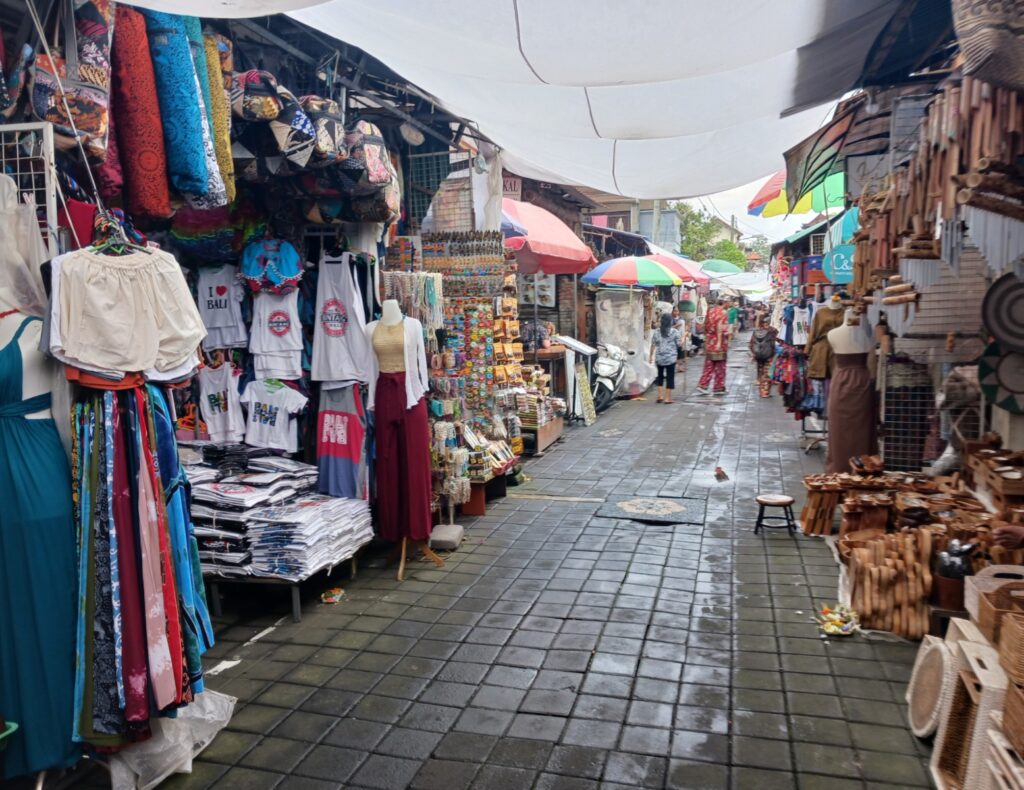

We spend the afternoon at the pool.


Day 13: We’ve decided to explore the Ubud region by hiring a driver’s services. The process is straightforward: we send the stops we want to make via WhatsApp to a company. They quote a price and send a driver who stays with us for a maximum of ten hours. We can go anywhere on the island of Bali during this time.
Additional charges apply if the ten-hour limit is exceeded. The driver determines the most suitable itinerary for the trip.
So, we start with the village of Penglipuran. It’s a traditional Balinese village where residents preserve ancient Balinese traditions. Despite the large number of tourists who visit daily, the village seems to have maintained a certain authenticity.



It’s possible to enter people’s gardens (where they often sell souvenirs) and see their temples, kitchens, etc. Walking along the main street is very pleasant. Due to its slope, taking a photo from the top of the street provides a bird’s-eye view. During our visit, the American show The Amazing Race was being filmed. Teams of participants were running in all directions, closely followed by their cameramen and team members who were frantically getting image rights signed from anyone they approached, clearly searching for a specific location. Benjamin even kindly offered his phone (and more importantly, his internet access) to one of them who rushed straight towards us asking for help.


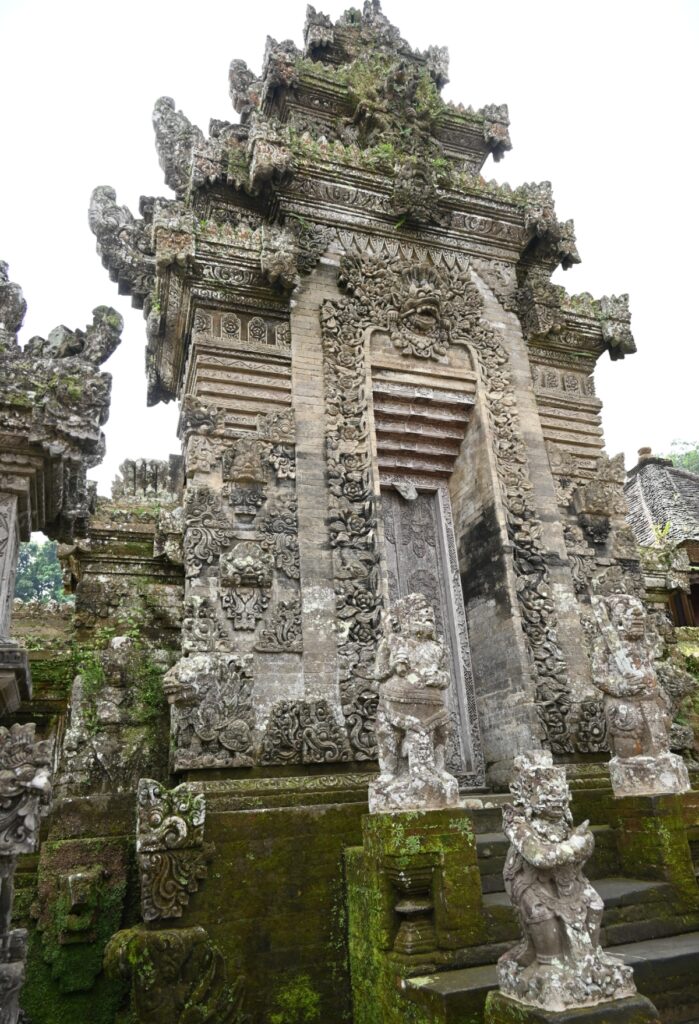
Next, we head to the Besakih complex, the largest and most sacred of all Balinese Hindu temples. The site comprises 23 temples built across six levels. A local guide is included (and mandatory) in the high entrance fee.




Once past the group of young girls who rush down from the shuttle to sell “mandatory” offerings to tourists, the visit is relatively calm and enjoyable. The guide accompanies us throughout the tour, explaining the intricacies of Balinese Hinduism and the history of the temple. There are plenty of photo opportunities along the way.

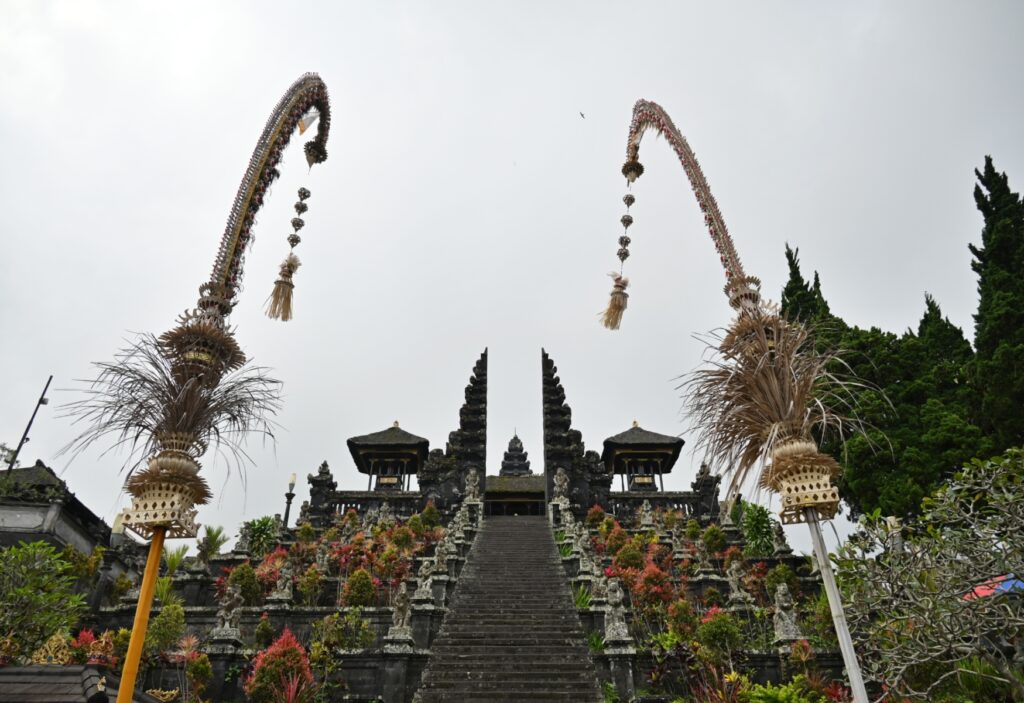
Third stop of the day: Tirta Empul Temple and its sacred springs.


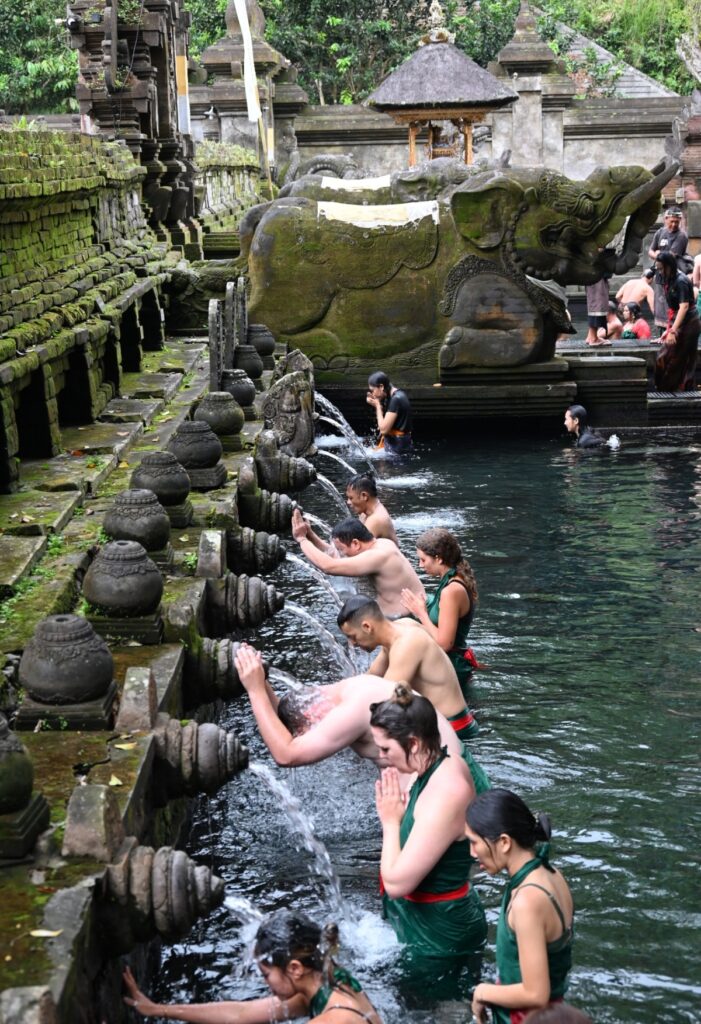
Devotees (and many tourists) bathe in these springs following a specific ritual to purify themselves. Visitors can also witness this ritual.



However, it is quite strange to see so many tourists participating in the ritual. The temple itself is indeed very beautiful.

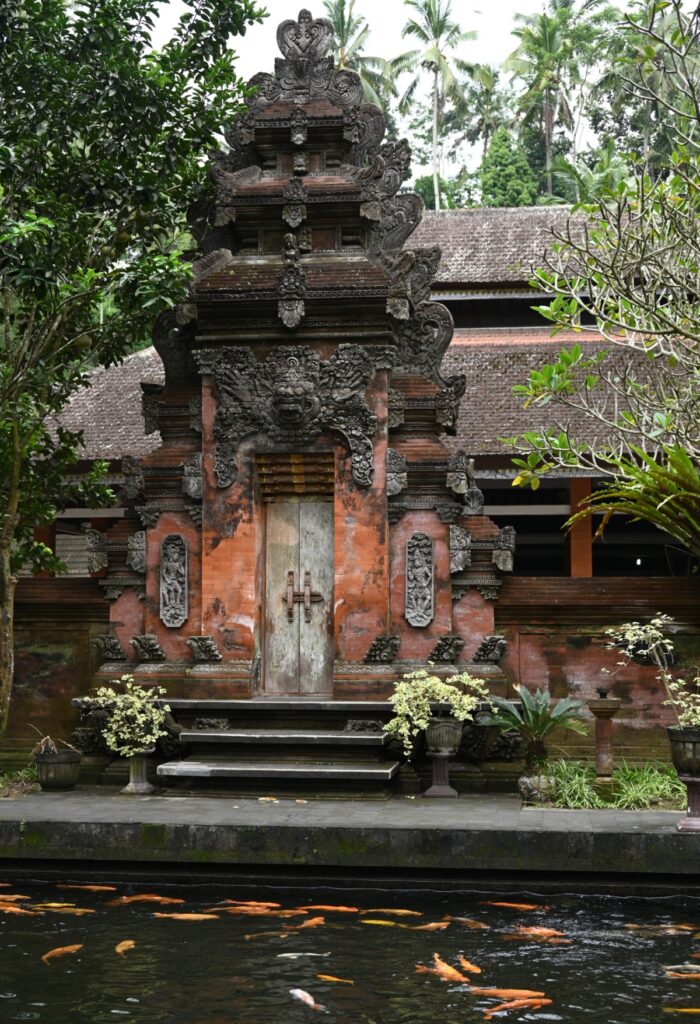

The fourth stop is very brief. Goa Gajah Temple has nothing particularly interesting except for its sculpted facade, which leads to a cave. The cave itself is not noteworthy, containing only three small altars emitting incense smoke that makes the air stifling. However, the facade with its numerous bas-reliefs and the large head with an open mouth is quite impressive.

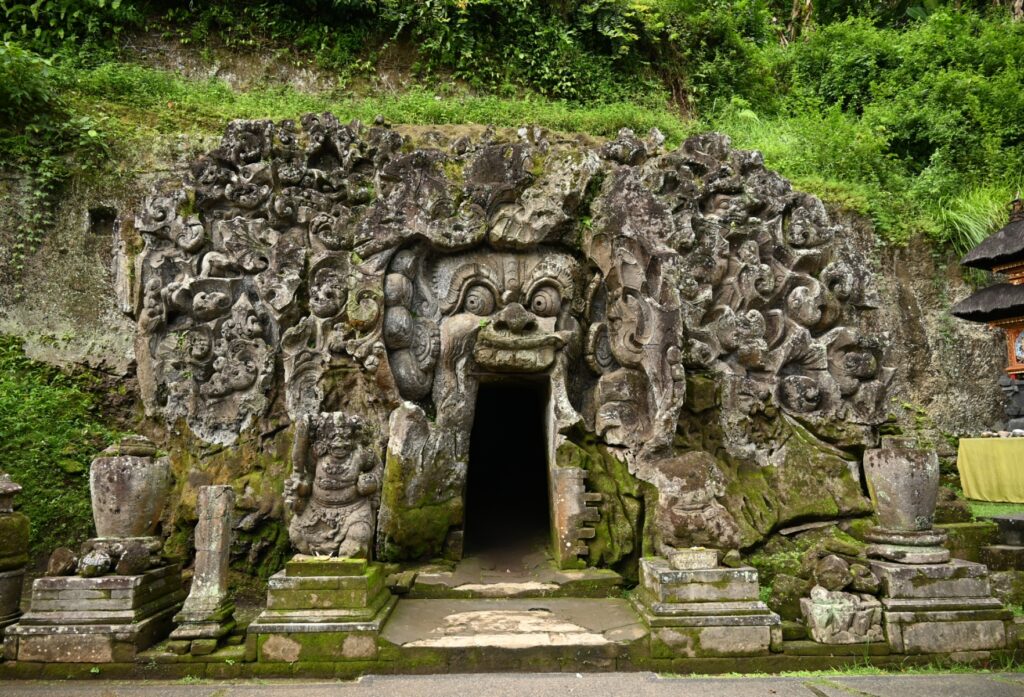
We end the day at the Tegalalang rice terraces. The conclusion is as abrupt as the surprise is total. We expected to find at least traditional terraces. Not at all! It’s more like the Disneyland of rice cultivation. The entrance is through a restaurant, and the complex offers swimming pools, jacuzzis, swings, and even an aerial bike ride.
There are indeed some rice terraces in the distance, but they are far from being the main attraction. Our driver informs us that there are no traditional terraces left around Ubud; they have all been transformed into these Instagrammable factories. We quickly leave the site, get back into the car, and return to the hotel.
Day 14: We leave Ubud for Kuta. Instead of going directly, we decided to hire a driver’s services to make three stops along the way. (This one, however, will be less pleasant than the previous one. He drives fast, honks frequently, and weaves between motorbikes. He also drops us off 10 minutes’ walk from our hotel, eager to finish his day early.)
Our first stop of the day is Tegenungan Waterfall. We didn’t expect to find the green and natural ambiance of the Munduk Three Waterfalls hike. However, we weren’t prepared for what awaited us, especially considering the overwhelmingly positive Google reviews. Unfortunately, the site no longer retains its natural charm.

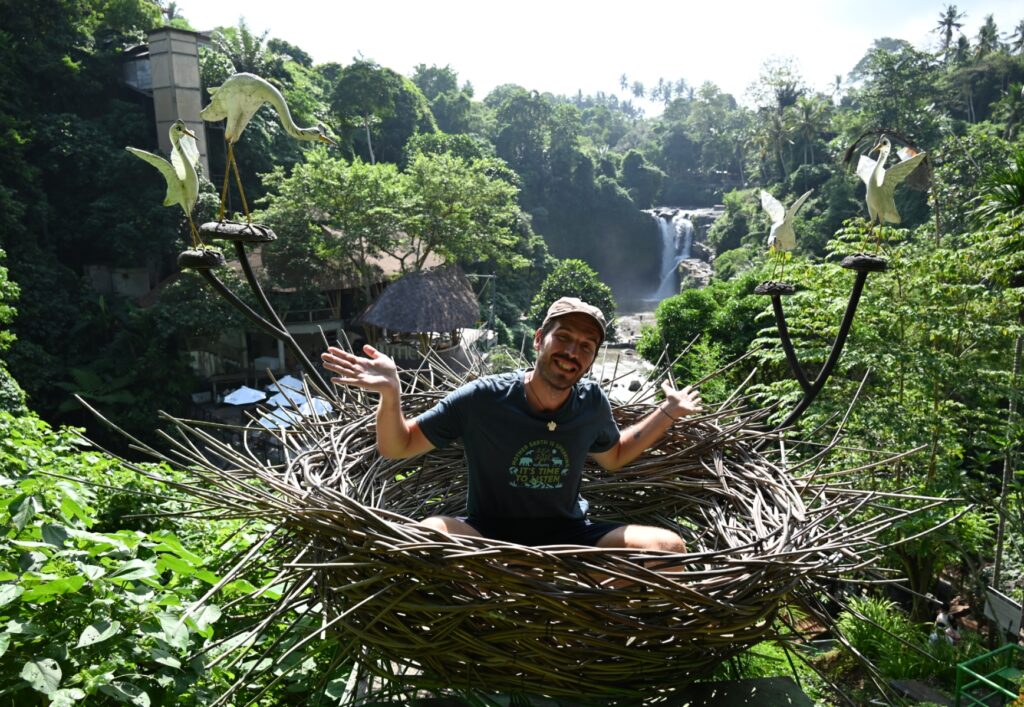

The waterfall itself is still present, thankfully, and very beautiful. Unfortunately, it’s no longer showcased naturally. Constructions have been developed behind and all around it. There’s even a restaurant with an infinity pool at the entrance of the site. Everywhere you look, there are only Instagram photo spots (a heart, a swing, a bird’s nest…). It’s truly a shame.



We parody a few influencers before getting back into the car.
The second stop is at Pura Puseh Desa Batuan Temple. The temple is very beautiful, and we see some rare wood paintings there.


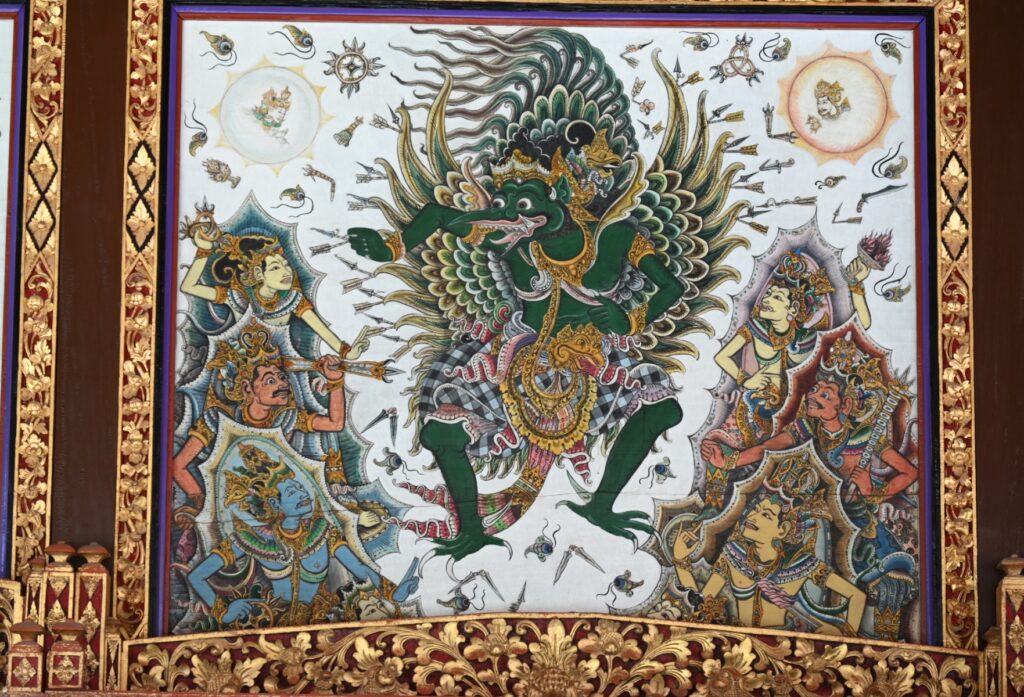
What’s quite nice is that all areas of the temple are open and accessible to tourists, including the prayer area, which is quite rare.

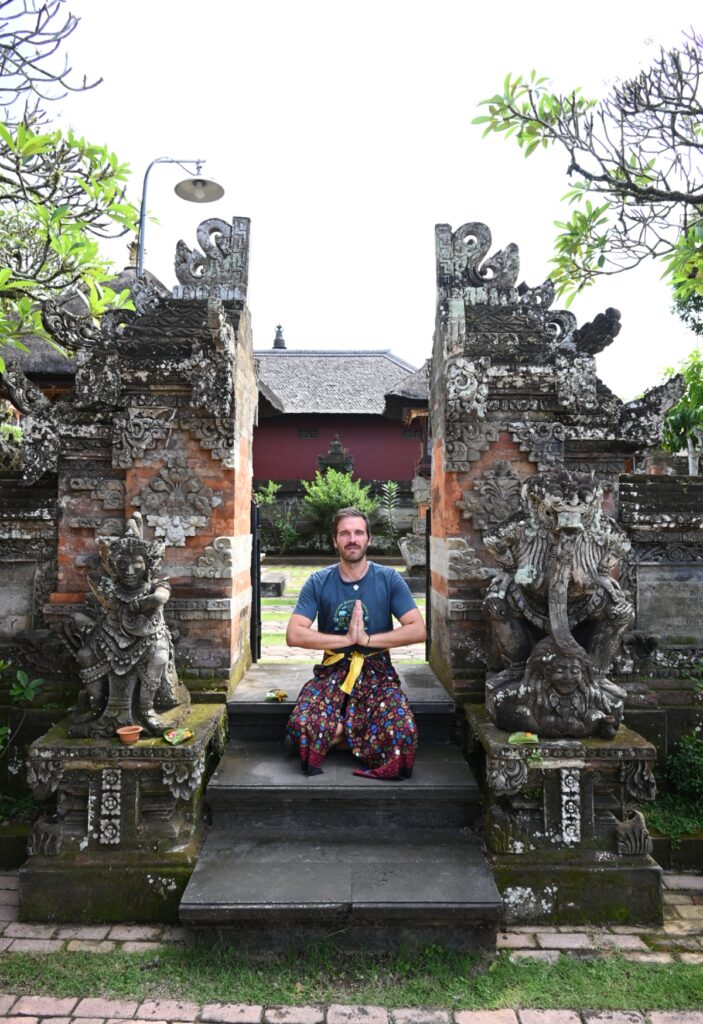

The final stop is the Bali Bird Park. We originally wanted to see Komodo dragons during our visit to Indonesia, but the best place for that is obviously Komodo Island. However, due to lack of time and François’ severe seasickness (making the journey difficult), we decided not to make a stop there.
So, if we wish to see dragons, we need to turn to the zoos. There are three possible places in Bali: the Bali Zoo, the Reptile Park, and the Bird Park. The Trip Advisor reviews of the first one are bad, and several raise animal ethics issues. So, we’ll skip that one. Visiting the second would be the logical thing to do since we want to see the largest lizard in the world. However, reptiles are not really our thing (excluding turtles). The idea of paying just to see lizards and snakes doesn’t really appeal to us.


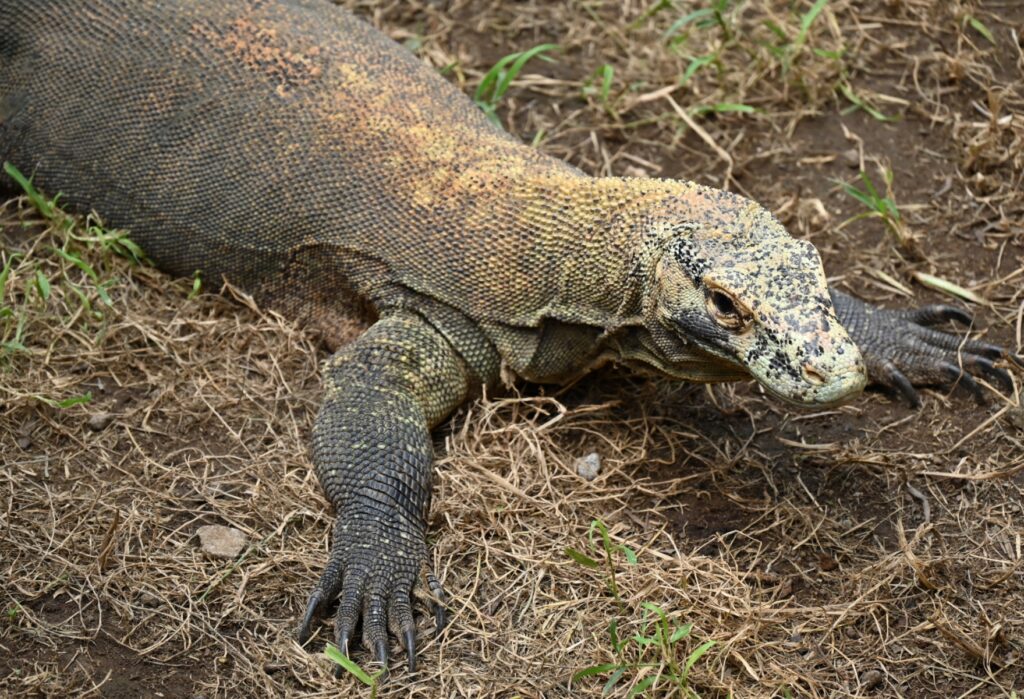
So, we choose the Bird Park. We had already visited one in Iguaçu, Brazil, and loved the experience. The one in Bali is more modest but still has 250 species of birds (many of them from the Malaysia-Indonesia-Papua-Australia region) and… four Komodo dragons.
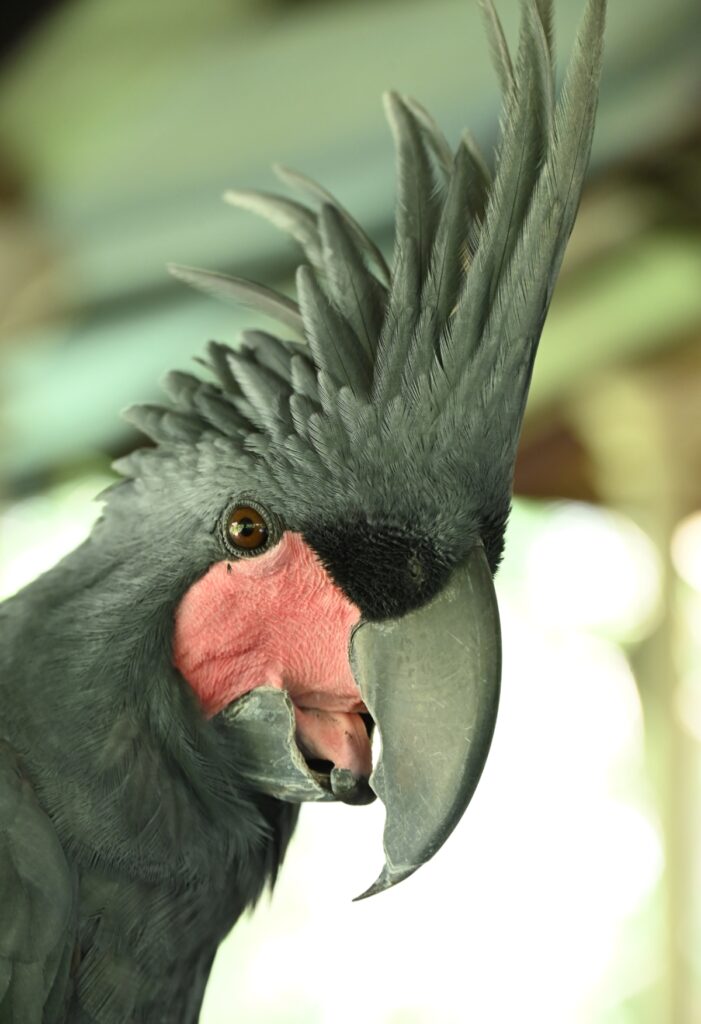


The highlight of the park: many birds are free to roam independently (pelicans, cormorants, cranes, parrots, etc.). So, it is possible to see them up close and sometimes even very, very close. The downside of the park: the cages are generally very small, and the birds have little space to fly.


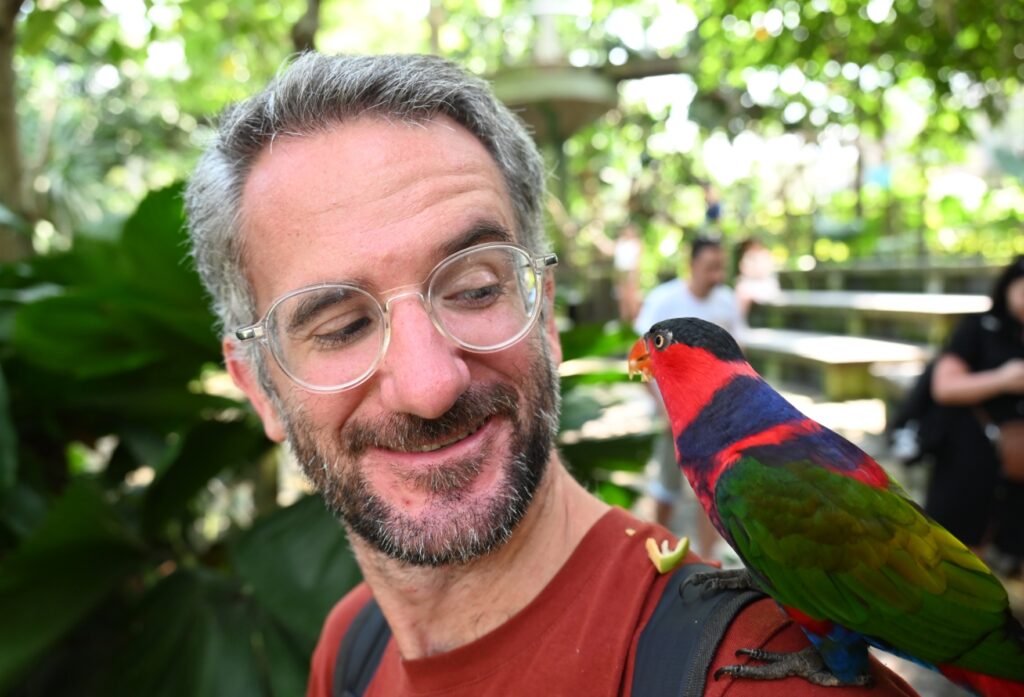
We still spent more than three hours there (including lunch) and left delighted with our experience, even though the dragons were, in the end, smaller than we had expected.
We arrived at our hotel in the late afternoon, just in time to enjoy the pool.
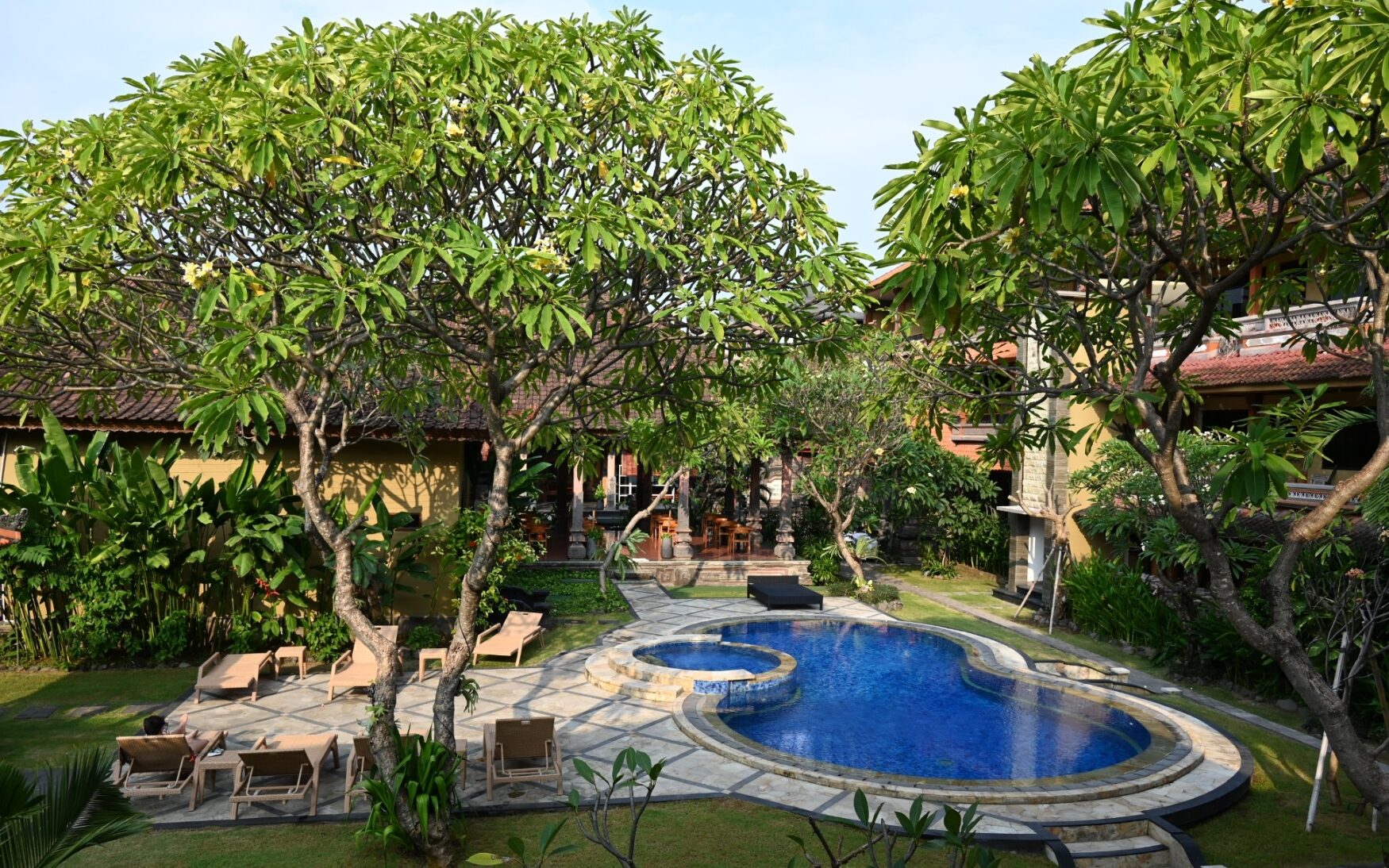
Day 15: Dengue fever Day 1: François wakes up with very sore muscles in his back and joints. Despite this, we go out to see the beach and the shopping mall in front of it. On the beach, we are offered a chair rental every ten meters. We don’t stay long.
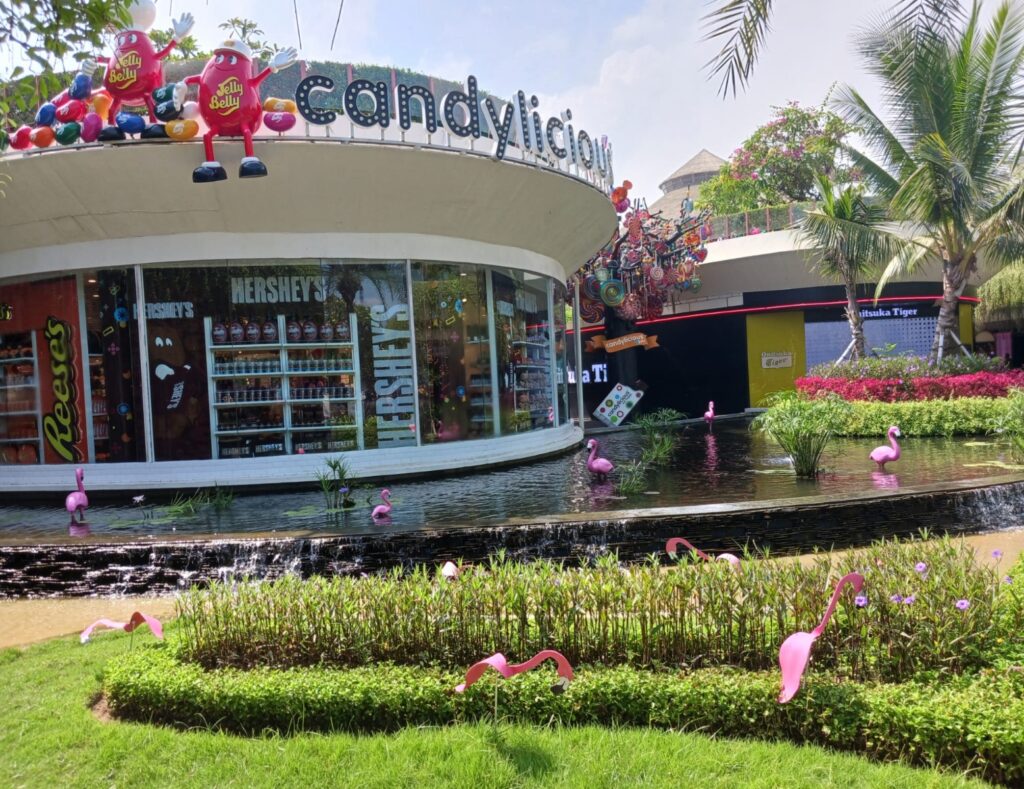

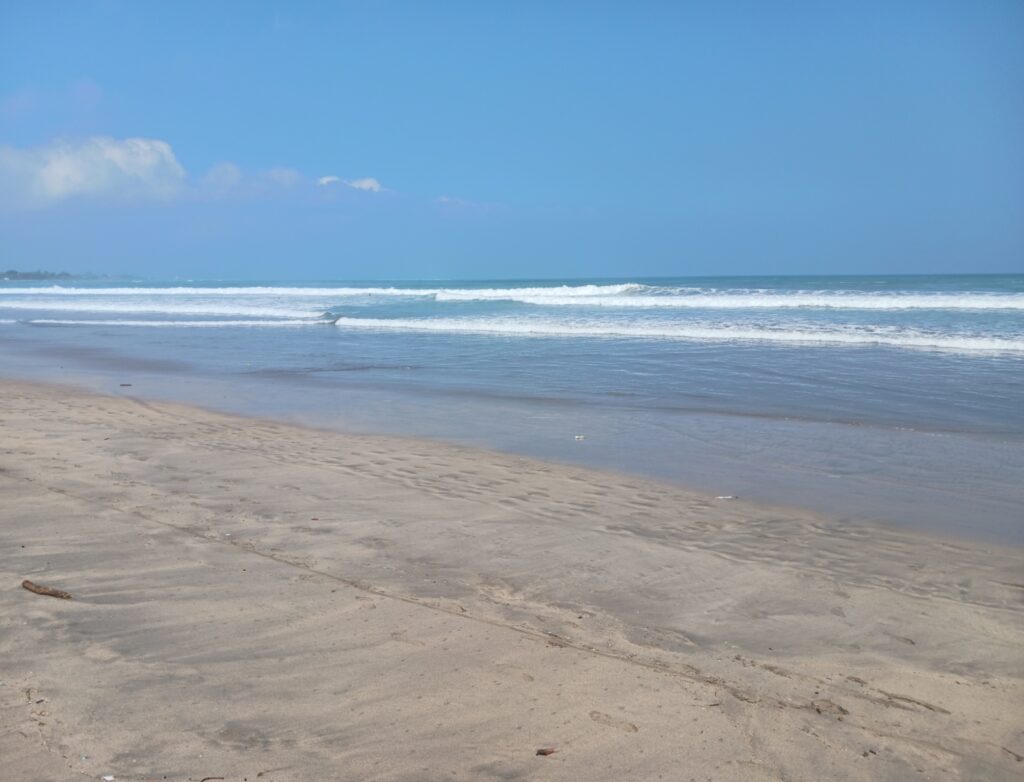
A high fever keeps François bedridden for most of the day. The symptoms resemble those of dengue. We cancel our flight to Sulawesi and our hotel there: he is clearly not in any condition to fly. You agree with us, right?
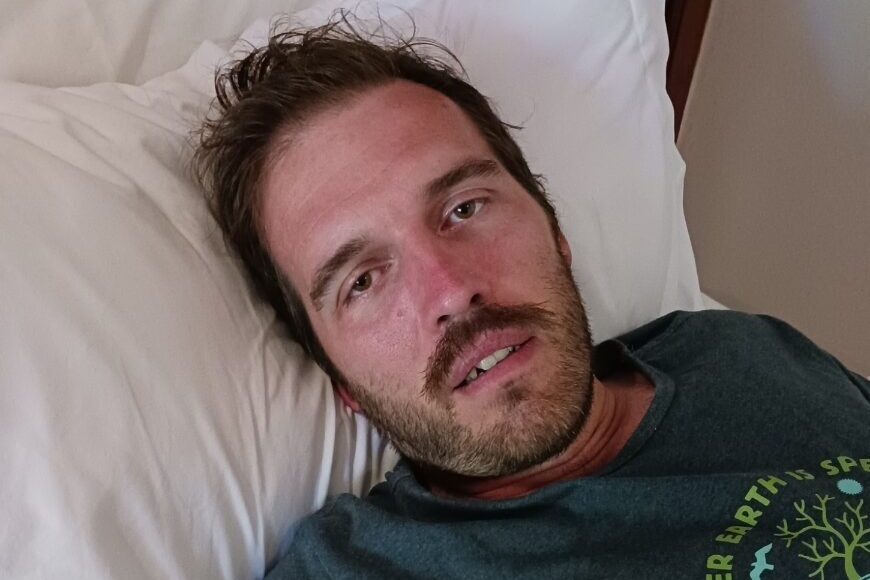
Day 16: Dengue fever Day 2: It’s Benjamin’s birthday. François is still feeling very unwell. The pain and fever persist. Moreover, he experiences a hypotensive episode causing him to lose consciousness upon getting up. Panicked, Benjamin calls a doctor to his bedside. The doctor concludes that it’s only muscular pain. She specifies that a diagnosis of dengue cannot be made at this point: the fever must be present for at least three consecutive days. She leaves after prescribing paracetamol and anti-inflammatories (even though anti-inflammatories should be strictly avoided in cases of dengue…).
Despite everything, we have to change hotels. The current hotel is fully booked, so we cannot extend our stay there.
Benjamin handles everything while François struggles in the Grab that takes us to our new hotel, just 1 km away. As soon as we arrive, Benjamin starts experiencing headaches, skin rashes, and decides to take his temperature: he also has a fever…
So we spend the rest of the day bedridden. There are certainly better ways to spend a birthday…
Day 17: Dengue fever Day 3: We both still have fevers. François is still very achy but manages to go out for some groceries. It looks like another day spent in bed for us.

Day 18: Dengue fever Day 4: François wakes up feeling refreshed, though a bit like a faded rose. The fever has completely gone, and the aches have significantly eased. However, there are still some pains in the neck and joints.
As for Benjamin, he feels like he wrestled with a truck in his sleep: soreness and fever. His night was tough.
We follow the doctor’s recommendations and head to the medical clinic in the morning for François’s first blood test. Benjamin is still exempt: he hasn’t had the three consecutive days of fever yet. We’re apprehensive about what we might find. After all, we’re in Indonesia, not Europe. The quality of healthcare is not known to be great.
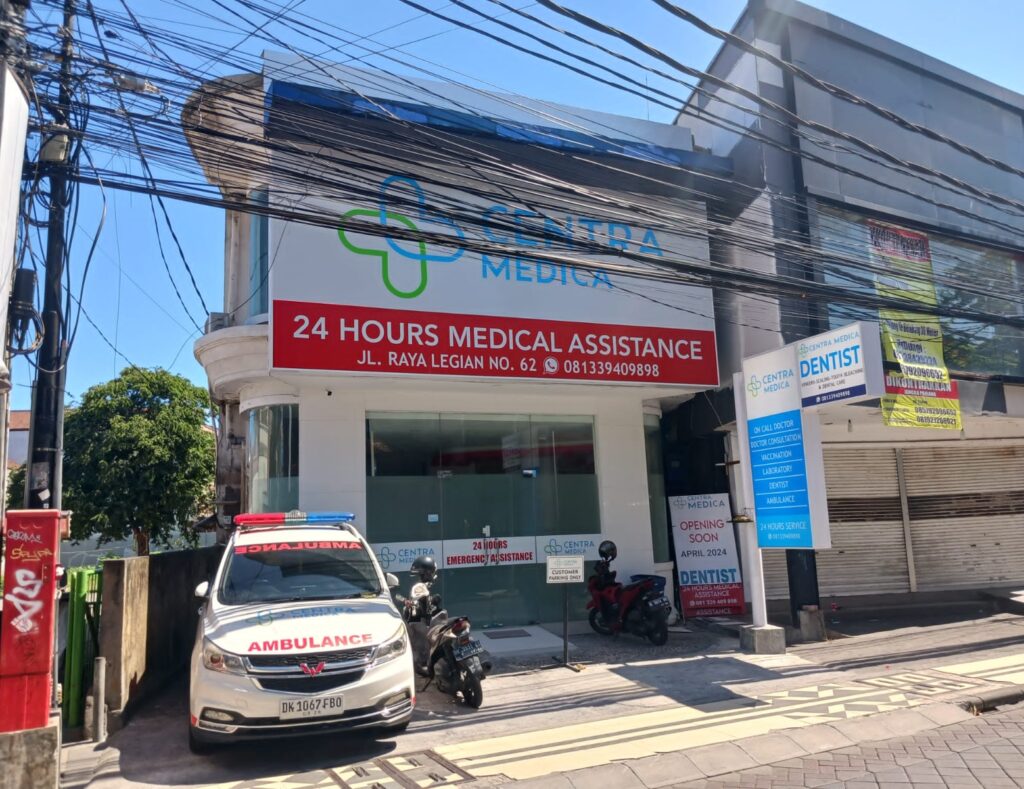

The exterior looks like a typical medical office. Inside, we are greeted by two nurses who speak enough English to understand our request and proceed with the blood test. Shortly after, a doctor arrives and answers our questions about the next steps.
The test results will arrive via WhatsApp in the afternoon. There is a decrease in platelets and white blood cells. Dengue is almost certain.
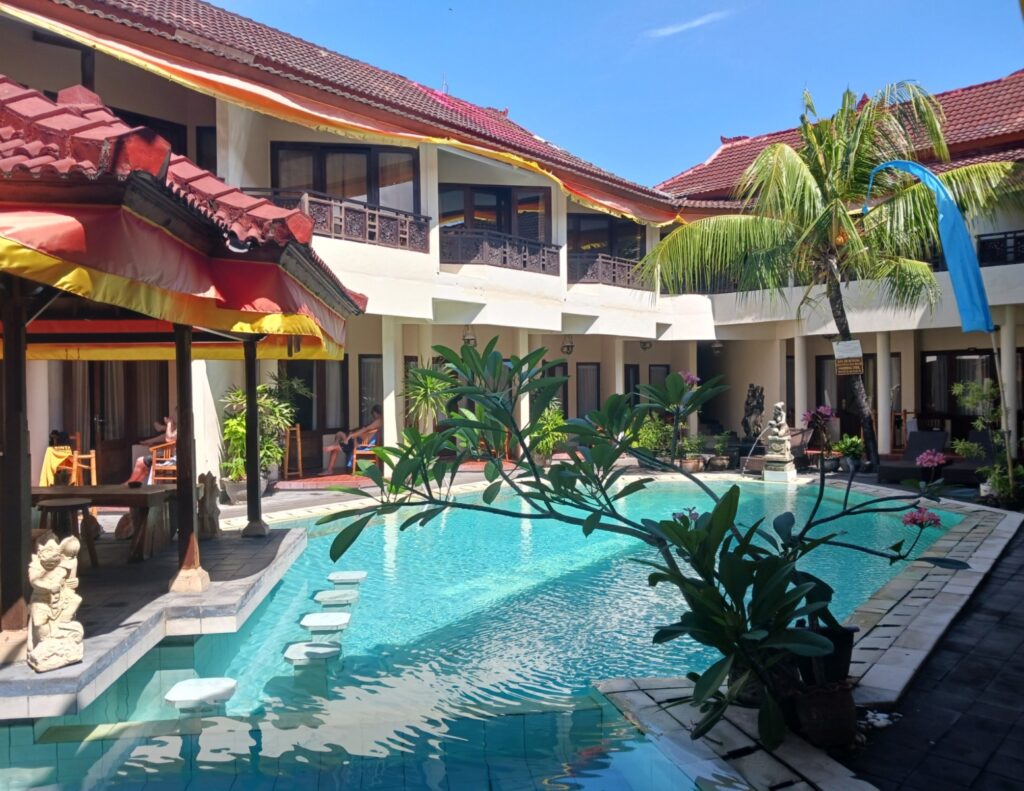
We spend the rest of the day between the room and the pool.
Day 19: Dengue fever Day 5: Benjamin wakes up very tired. Fatigue has returned for François as well. We return to the clinic. François undergoes another blood test. Benjamin gets the full treatment: consultation, assessment, and an intravenous vitamin infusion. We stay at the clinic for nearly two hours.
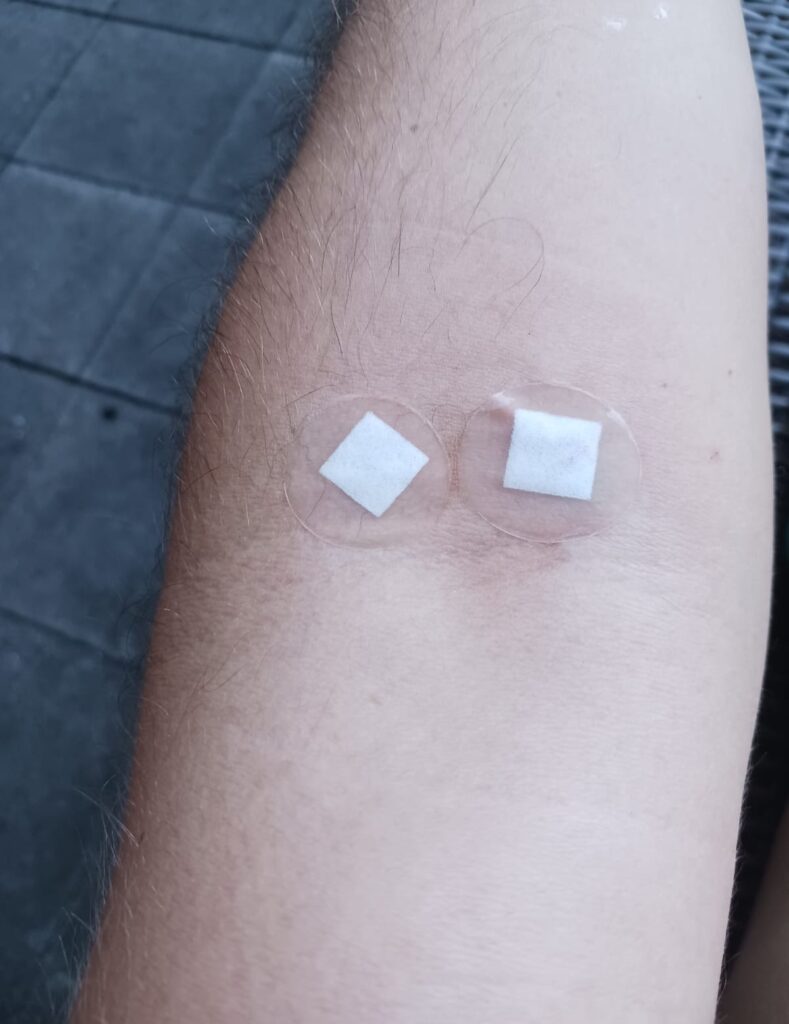
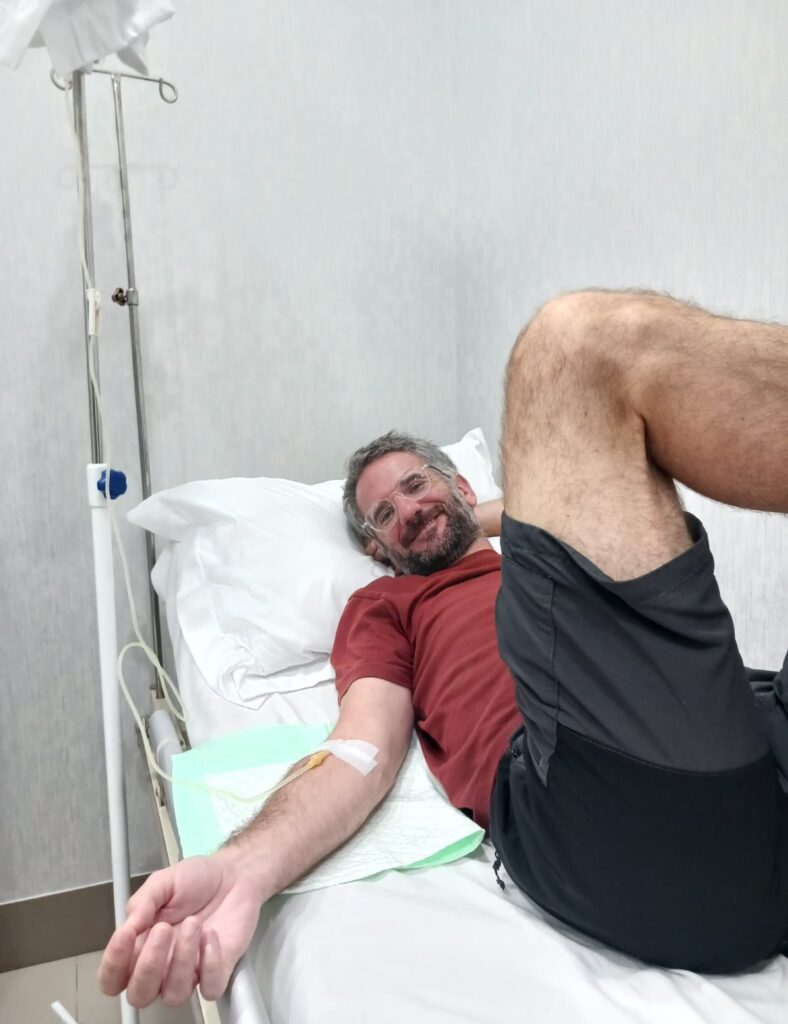
In the afternoon, Benjamin rests by the pool while François goes in search of fresh fruits. The vitamin intake is more than necessary.
The test results arrive. Platelet count has continued to decrease, but white blood cell count is rising (at least the body is fighting back, which is something). Benjamin is feeling better. The infusion has rejuvenated him.
Day 20: Dengue fever Day 6: Benjamin is doing well. François is very tired. We head to the clinic again. François undergoes another blood test and also receives a vitamin infusion to boost his energy. The experience remains traumatic: it takes three people and four attempts to successfully insert the needle. François also had to insist not to have the intravenous line placed in his hand (unnecessarily painful): even Benjamin noticed his arm veins bulging when the tourniquet was applied.
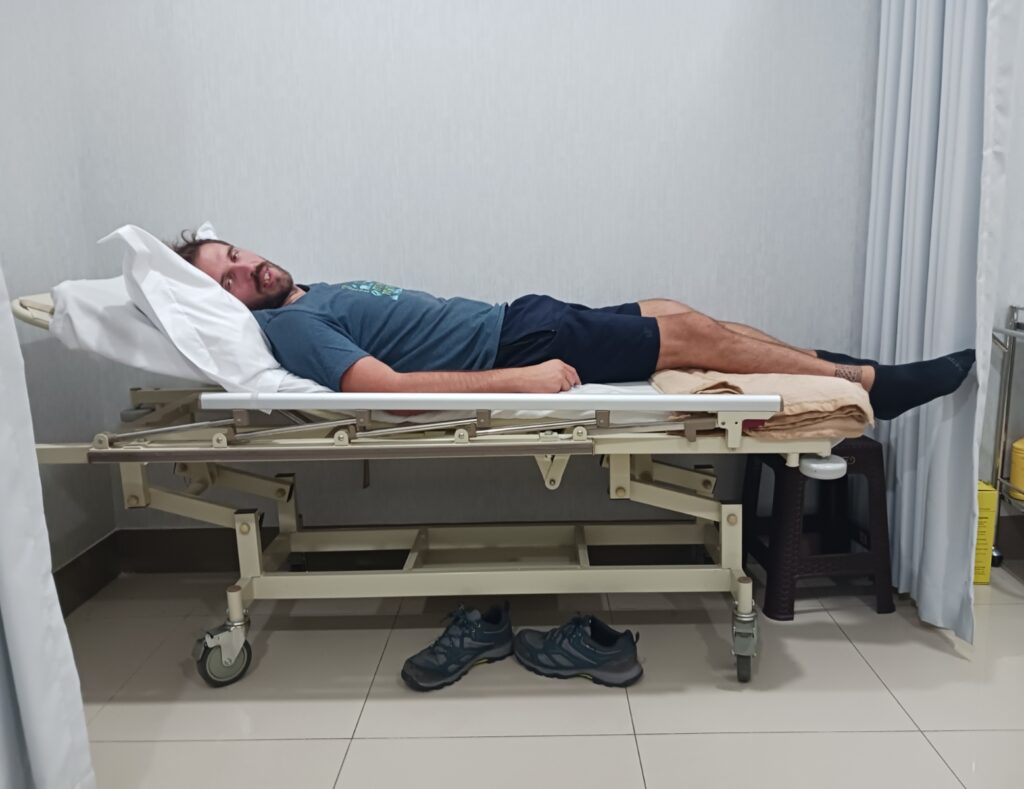

As it has become tradition now, we spend the afternoon at the pool.
François’s test results arrive in the evening: platelet levels have started to rise. Remission is underway.
Day 21: Dengue fever Day 7: We go to the clinic to pick up our insurance forms. The doctor there almost seems disappointed not to have any samples to collect this time…
Since we’re feeling better, we take a short stroll through a nearby shopping mall to enjoy the air conditioning.



We also finish by visiting the waterfront before returning and jumping into the hotel pool.
Day 23: A relaxed day spent mostly at the hotel and by the pool.
Day 24: The morning is dedicated to sending a package to France. We bought some wooden and woven souvenirs in Malaysia and Indonesia and want to send them before entering Australia. Australian customs are known to be strict about imports, so we prefer not to take any chances.
We choose a post office with good Google reviews. Given the existing stress with each of our shipments, we avoid adding more by selecting a post office known for losing packages and postcards. The postal clerk handles the shipment in a few minutes (it turns out to be the quickest and simplest postal system we’ve seen so far). The only issue is that they’re out of boxes. No problem: we leave our items in a plastic bag, they order a box, pack everything up, and we return in two hours to confirm that the package is ready for shipment. It’s an unorthodox way of doing things!
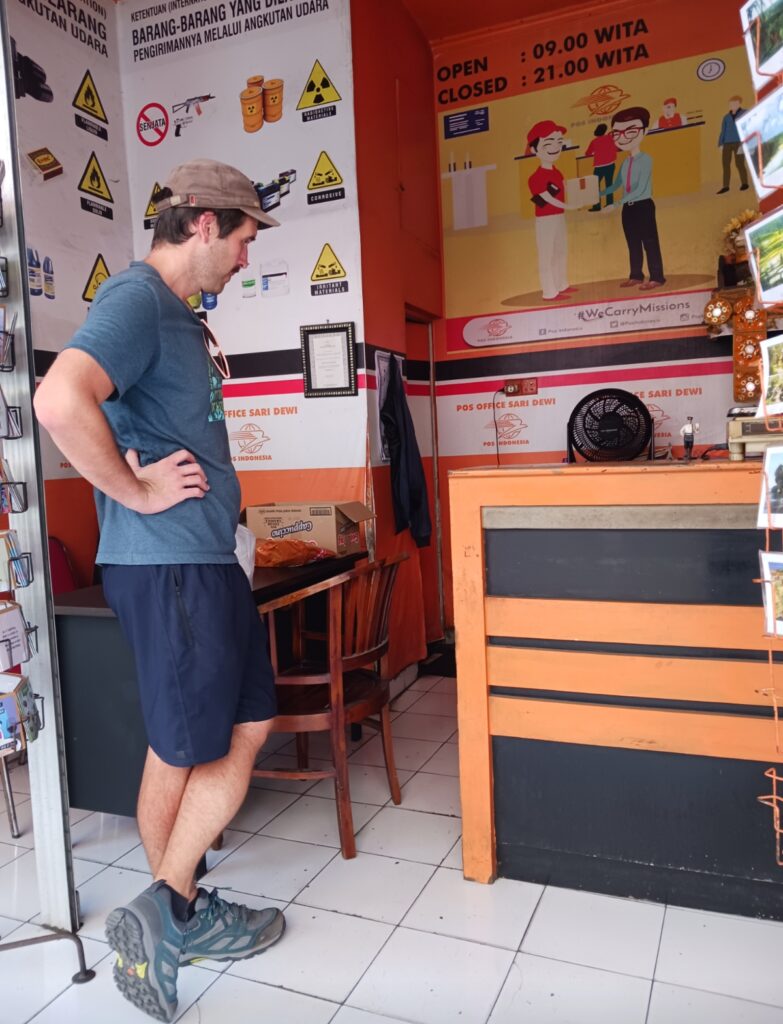


On the way back, François stops for a haircut. It’s clear that the salon’s services go beyond just hairdressing. Behind the chair, a massage bed is visible behind a curtain, and there’s also a price list for facial treatments. Given the terrible result, it’s evident that the hairdresser lacks proper certification.


Once her work is done, she even suggests eyebrow waxing and a massage to François… He escapes before the offers escalate any further.
Day 25: We book a car to travel to Amed as there aren’t many other transportation options for the 70 km distance between the two hotels. It takes us over 5 hours to cover this short distance (yes, indeed, 5 hours…). The worst part is that there was no apparent reason for such a painfully long duration—we didn’t encounter any accidents or roadworks along the way.
We have lunch at a tourist restaurant. The price is quite high, but at least the setting is nice and the food is excellent.


We spend the rest of the afternoon by the pool under the frangipani trees.
Day 26: We rented snorkeling gear from the hotel and headed to the beach, which was a 5-minute walk away. The black sand beach was littered with trash. There were quite a few boats parked, and we had to weave between them to move forward. We set our towels in the shade of a tree, amidst piles of garbage. François went for a swim. There were no corals, just rocks where colorful fish were swimming around. It’s just unfortunate that plastic waste was floating everywhere and there was a smell of gasoline.
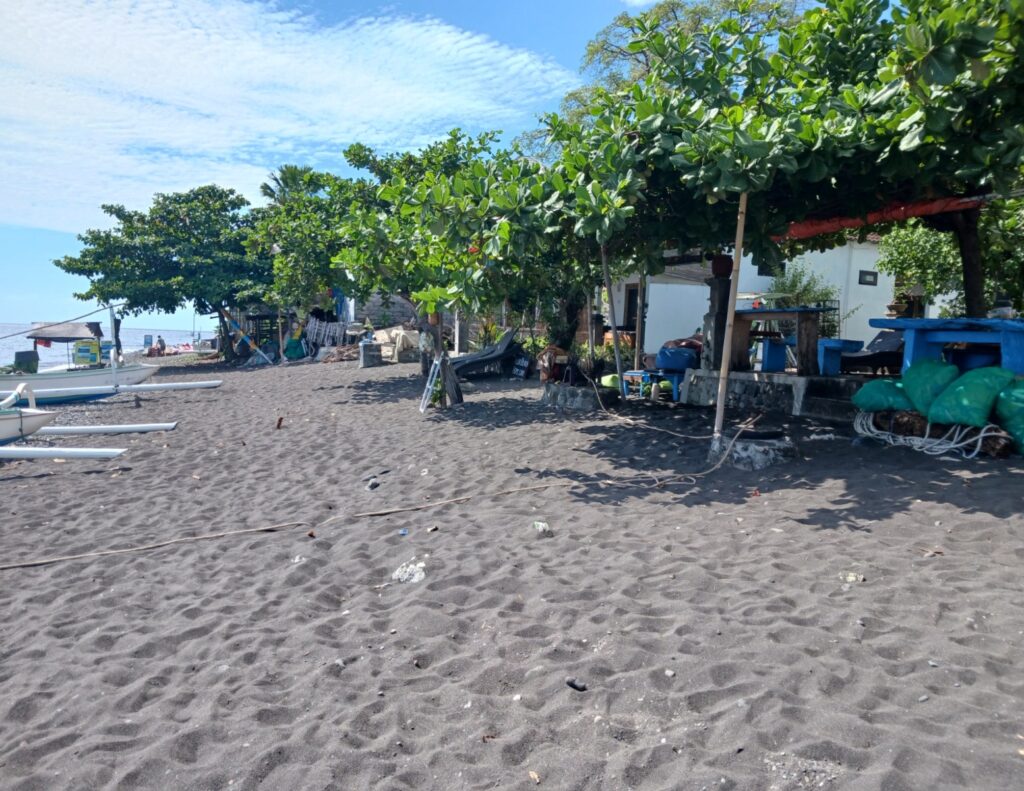

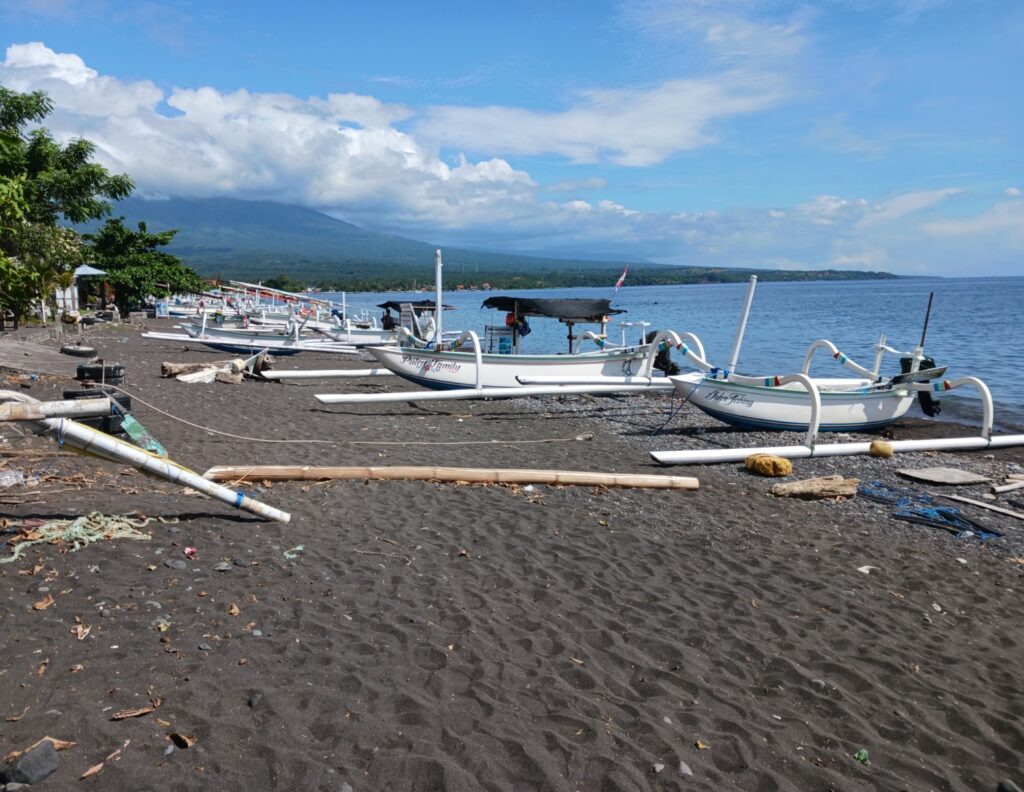
We stayed on the beach for nearly 4 hours before returning to the restaurant from yesterday. There are few “safe” restaurants around, and the experience from the previous day was excellent.
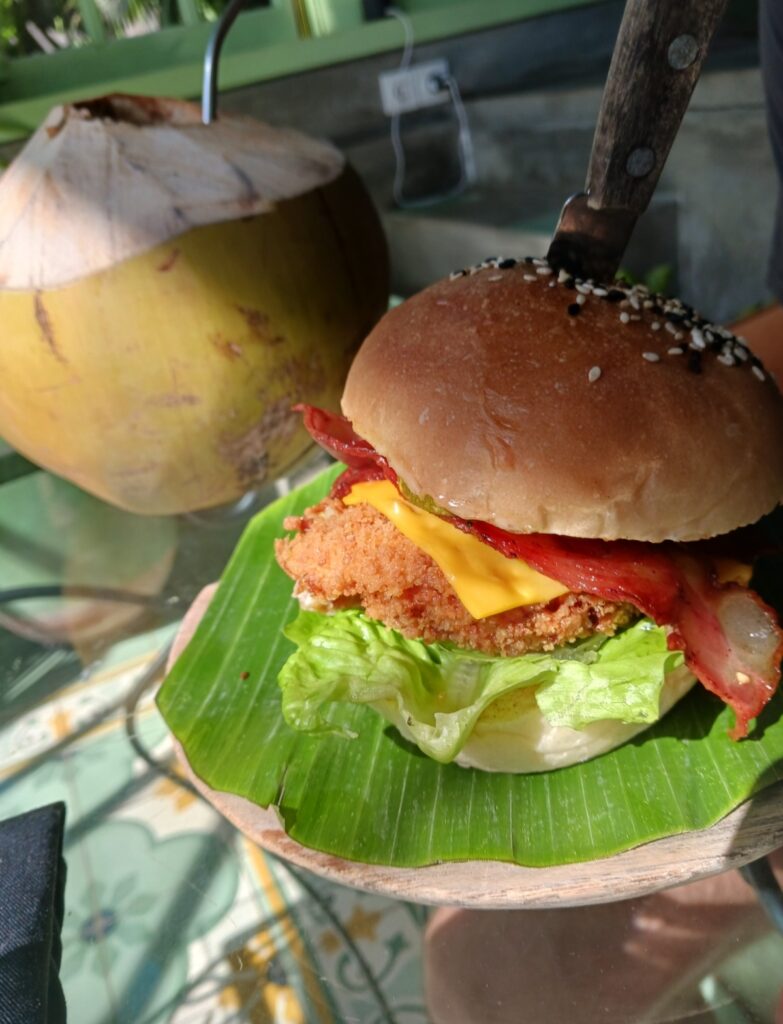

We spend the afternoon at the pool.
Day 27: Disappointed by our beach outing the previous day, we spend the day by the pool instead.


Day 28: It’s already the end of our adventure in Indonesia. It takes us over 3 hours to cover the hundred kilometers to the airport. We really don’t understand why the journeys are so long in this country…
A 2-hour and 30-minute flight in the evening brings us to Darwin, where we begin our stay in Australia.
Find all our other articles on Indonesia:




